|

Week
ending 27th September: Doonfoot,
Troon
Picturesque
Doonfoot
is one of our favourite locations and rarely disappoints. As I started
my walk around the mouth of the River Doon the weather was
well
nigh perfect for my photography as can be seen from the photo below.
The tide was also perfect as it was nearing it's height and many birds
had ammassed in the area, awaiting the slow reveal of damp sands that
would provide their next meals.

I
passed along the wee pond adjacent to the car park where I found
several birders watching expectedly for a glimpse of an
elusive Water
Rail.
I timed my appearance well as it made an immediate prolonged
appearance. So it was click click click and on to the Doon mouth to
catch the tide. There were Carrion Crows squabbling over food scraps,
and on the water, many tens of Mute Swans, including large cygnets, had
gathered.
| Water Rail |
Carrion Crow |
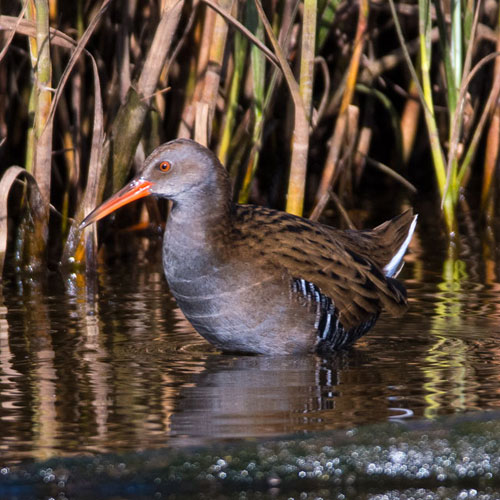 |
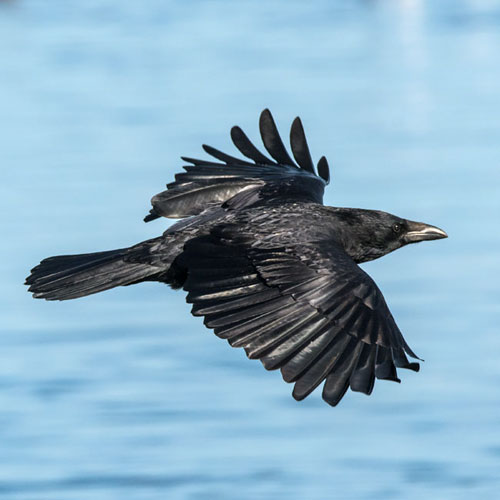 |
| Mute Swan |
Juvenile Mute Swan |
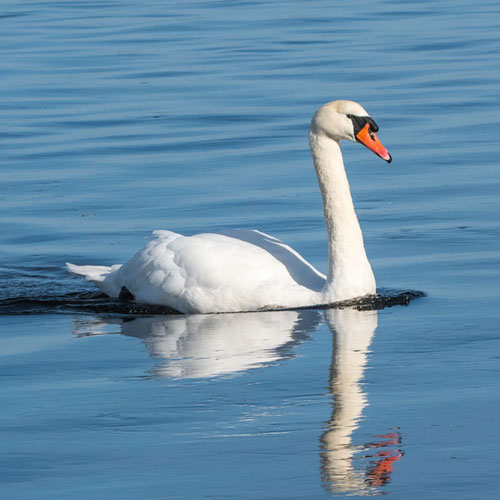 |
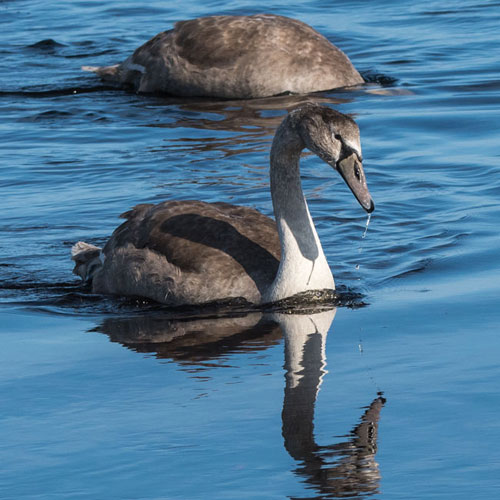 |
A
lesser Black-backed Gull was sounding off after repelling some Carrion
Crows that had gone too close to it's chick. I snapped a portrait of a
Mallard as it paddled into the light. Also enjoying the light were a
sizeable group of Redshanks resting on the opposite bank waiting on the
waters clearing. A Black-headed gull too was waiting in the bright
morning sunshine.
| Lesser Black - backed Gull |
Drake Mallard |
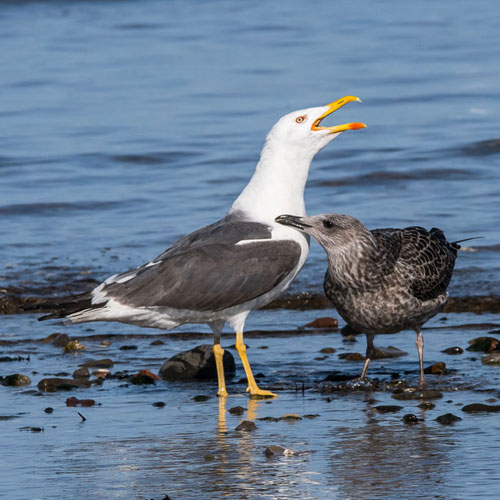 |
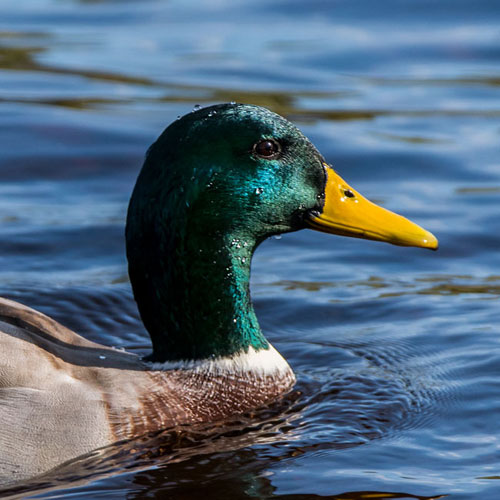 |
| Redshank |
Black - headed Gull |
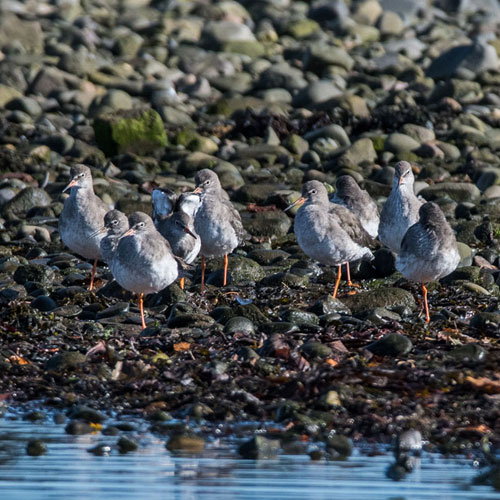 |
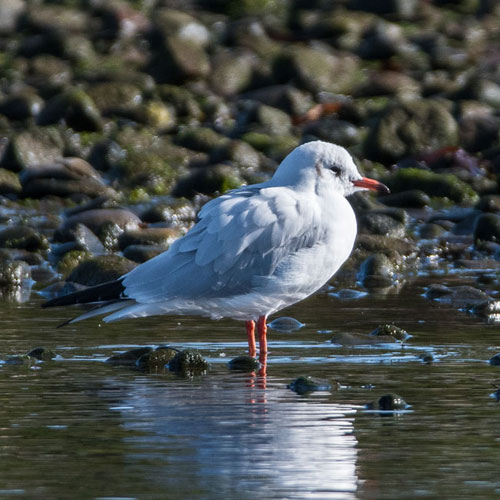 |
I
passed a few Rooks that were foraging on the short grasses near the
shore, while just offshore a lone Shelduck
in eclipse plumage dabbled in the shallows. I was pleased to see a Greenshank
resting on the water's edge. Eventually it was scared off by a group of
quarrelling Crows. A well-lit Redshank flew past speedily but I did
manage a few shots.
| Rook |
Shelduck in Eclipse plumage |
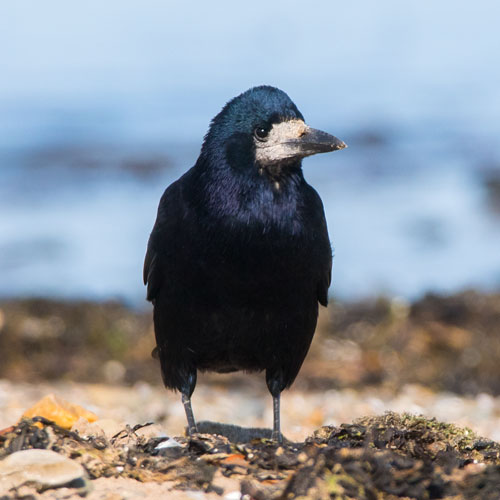 |
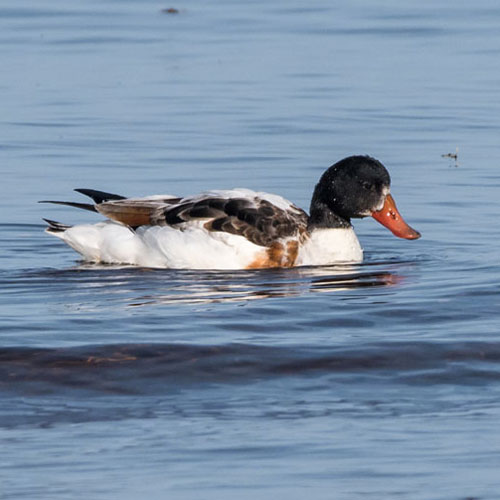 |
| Greenshank |
Redshank |
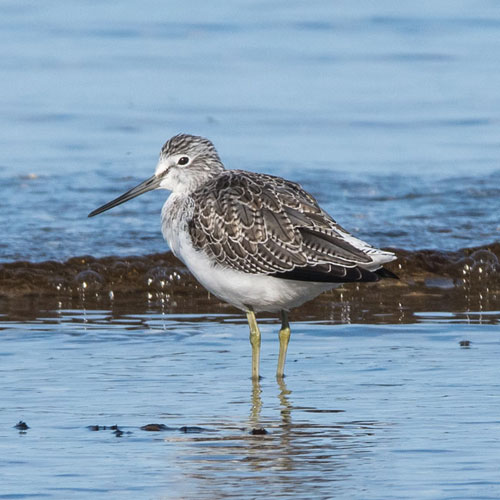 |
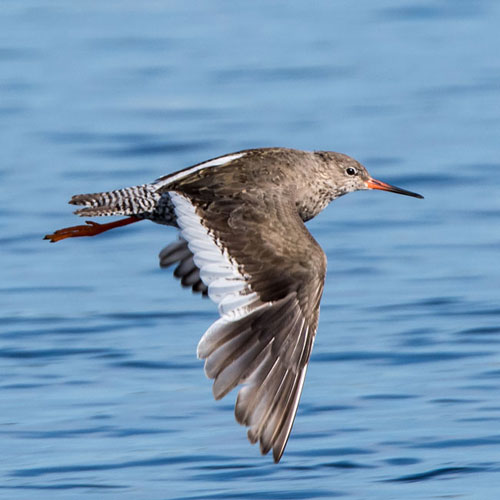 |
A
bit further from the shore I spotted a winter plumage Teal
and Wigeon.
Some Dunlin
flew in and started searching the damp sands for
invertebrates.
Before long they had taken flight again to the opposite bank.
| Teal |
Wigeon |
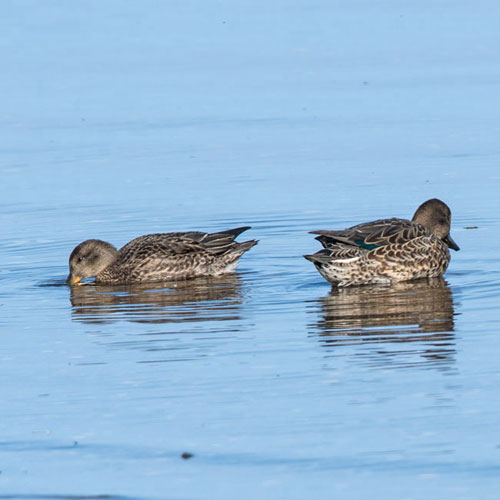 |
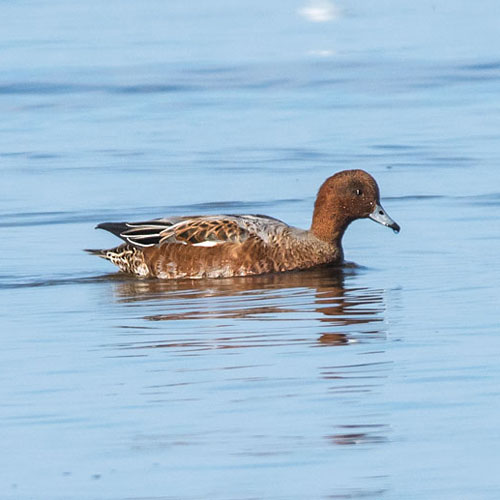 |
As
I headed for the footbridge across the Doon I passed a bold Robin in
the pathside bushes. There were also House Sparrows and Starlings. A
fairly distant female Stonechat appeared
on grass heads in the grassy dunes along the the promenade.
| Robin |
House Sparrow |
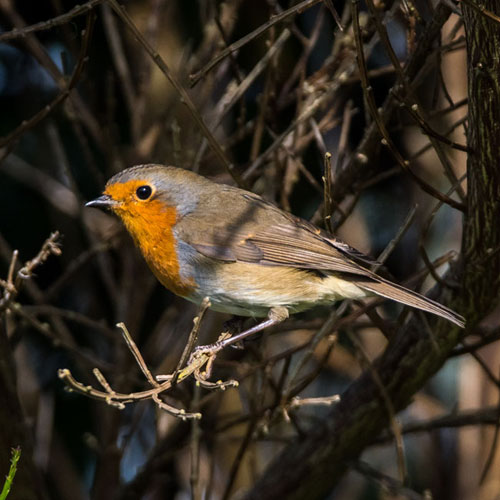 |
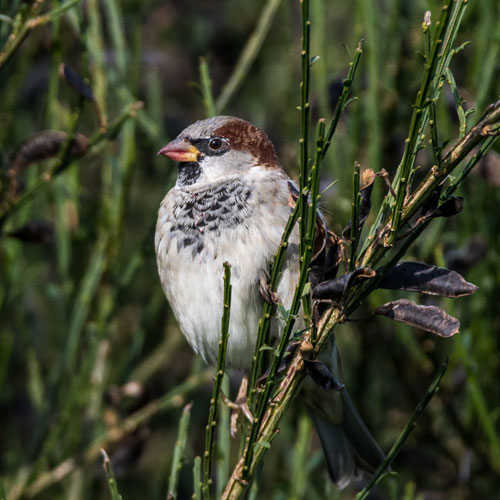 |
| Starling |
Stonechat |
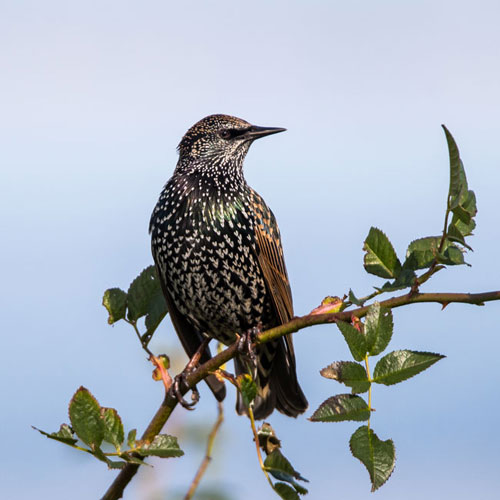 |
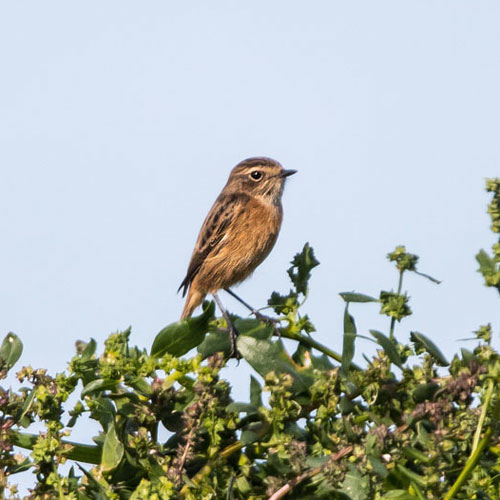 |
I
moved
onto the sandy beach where I got a few nice shots of a Starling that
was probing the sands. Also searching the beach for tasty morsals
were a few nippy Pied Wagtails. They are always on the move to keep a
safe distance from walker (of which there were many). There were about
20 Curlews gathered on a secluded part of the shore, about 50 m away. A
turnstone darted across the rocky shore, probably threatened by my
close proximity.
| Starling |
Pied Wagtail |
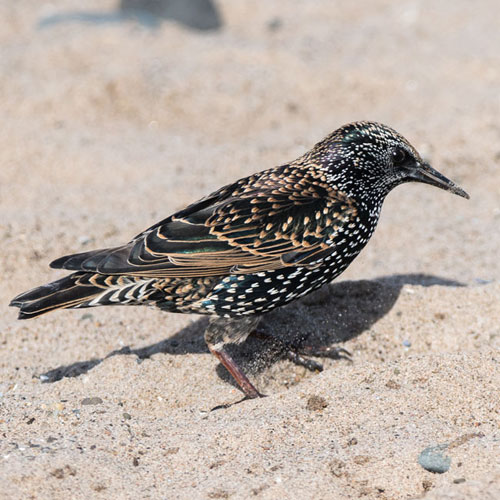 |
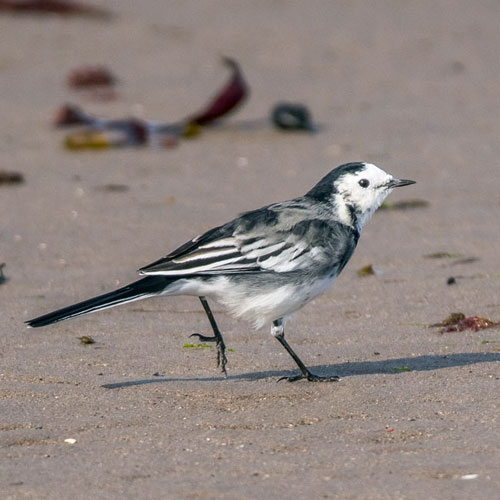 |
| Curlew |
Turnstone |
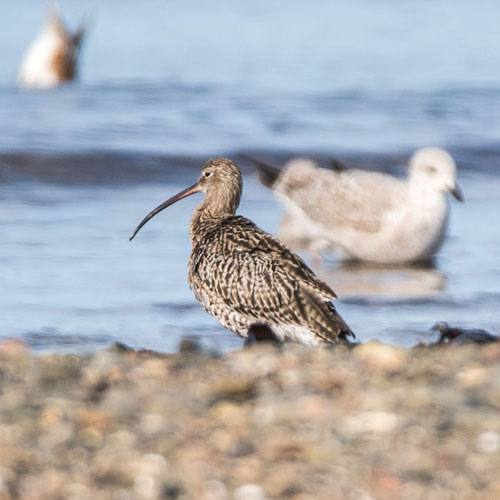 |
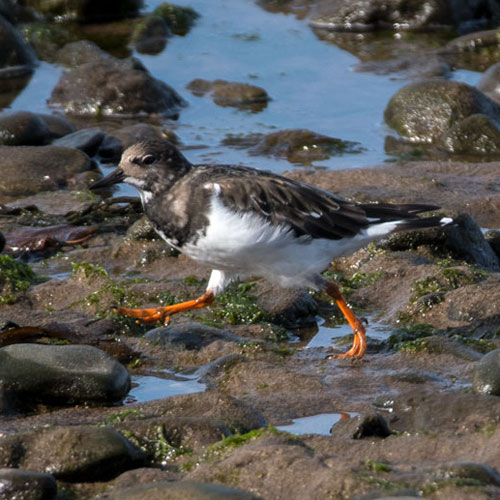 |
I unwittingly startled a
Woodpigeon that
had been close to the Turnstone, but I ended up getting a decent flight
shot. Looking out to the sea as I walked along the beach I
saw a
half dozen Pale - bellied
Brent Geese working
their way north along the waters near the shore.
| Wood Pigeon |
Pale - bellied Brent Goose |
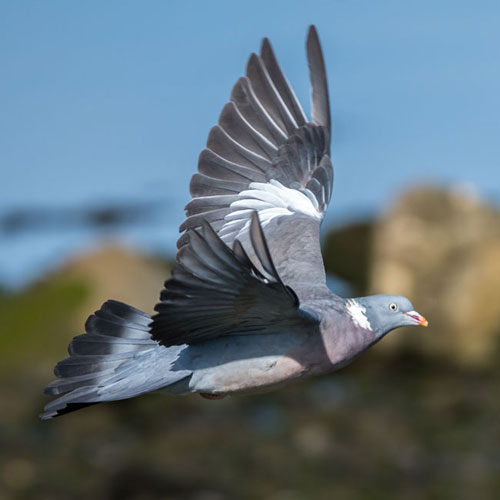 |
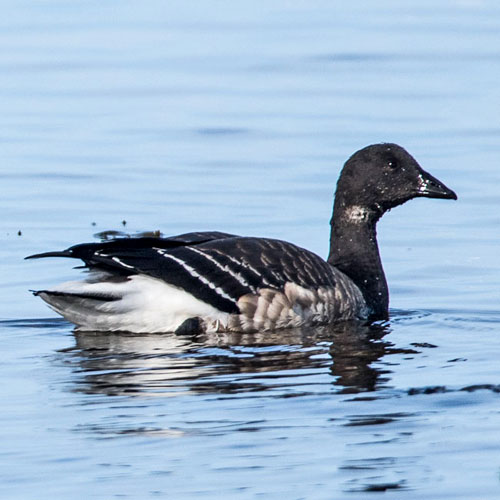 |
I was very satisfied with
my collection
of observations but I decided to relocate to Troon Harbour for a spot
of lunch as I like the view from the car park there. When I arrived I
was met with the view, below, of a colony of Shags, not a bad view
right enough.
As I sipped my tea I was
checked out by
an inquisitive Robin that settled near me on boulders. Another pretty
visitor was a Small Tortoiseshell butterfly that landed on a Pencilled
Cranesbill. Atfer tea I scanned the shore for Golden
Plover and
Knot I'd seen passing while eating, Eventually, I found them
on rocks some way out from the beach.
| Robin |
Small Tortoiseshell Butterfly |
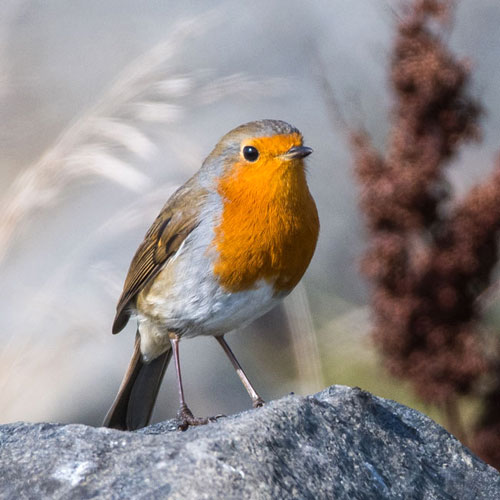 |
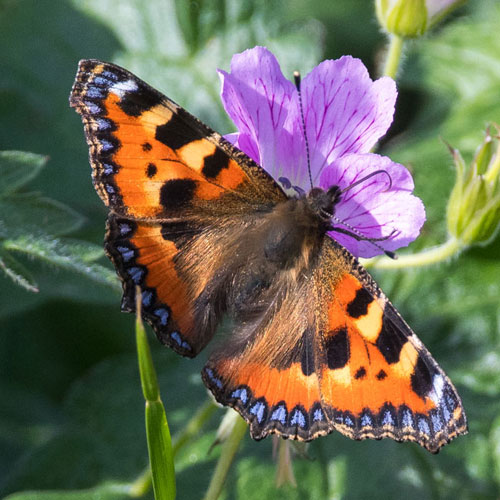 |
| Golden Plover |
Knot |
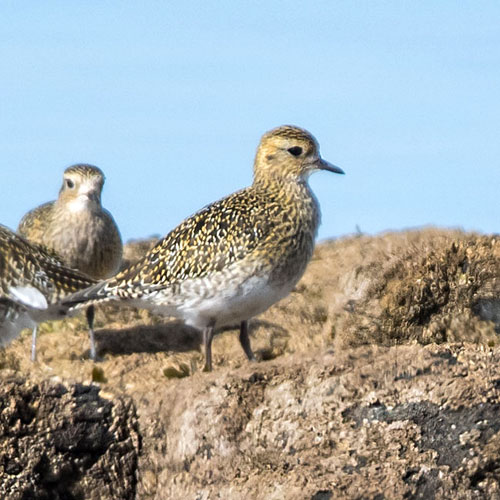 |
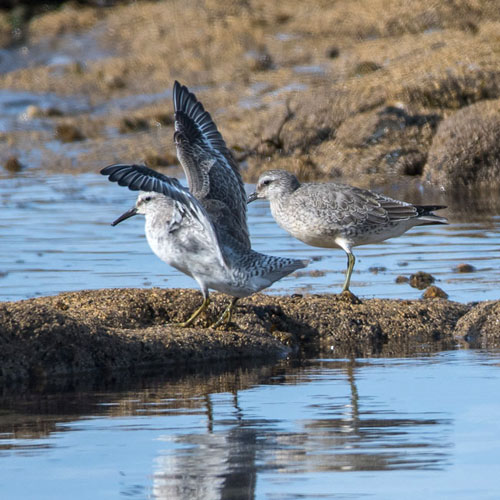 |
The Shag colony had moved
into the water
due to the increasing numbers of people, who, on finishing their fish
suppers, began clambering on the rocks.
I made a couple more shots
before I
left. The first was of a low-flying pair of Eider as they sped past a
surprised canoeist. My final sighting was vey welcome - it was Sammy
the Grey Seal - a frequently-seen- "friend" ( I know it may not be the
same creature seen each time, but we like Seals.
| Eider |
Grey Seal |
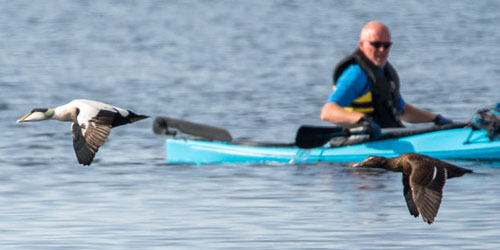 |
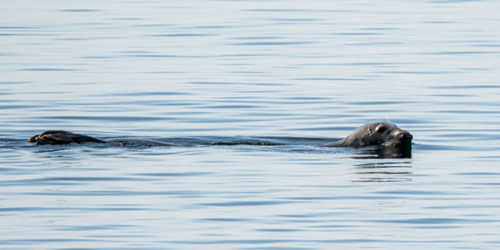 |
Week ending 20th September 2020: Stevenston Point,
Saltcoats
and Irvine
Harbour
The
weather prediction was very promising: dry, sunny and warm. I headed
for North Ayrshire to
start my the day at Stevenston Point. The panorama towards Saltcoats,
with Arran in the distance,
was magnificent.
My first sighting was a
nimble wee Meadow Pipit that dodged into the bushes, but I still
managed
to capture an image. As I walked toward the Point I caught a glimpse of
a white-rumped bird in
flight over the rocky shore. It was a Wheatear .
Its name derives from “white erse” (bum). A
Redshank was resting on a rock on the water’s edge as an
Oystercatcher dashed across my view
to join others at the Point.
| Meadow Pipit |
Female Wheatear |
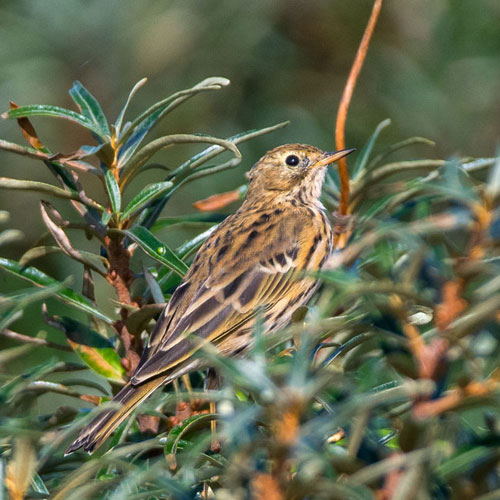 |
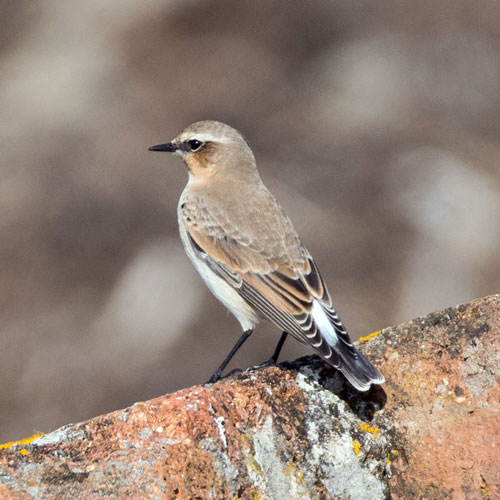 |
| Redshank |
Oystercatcher |
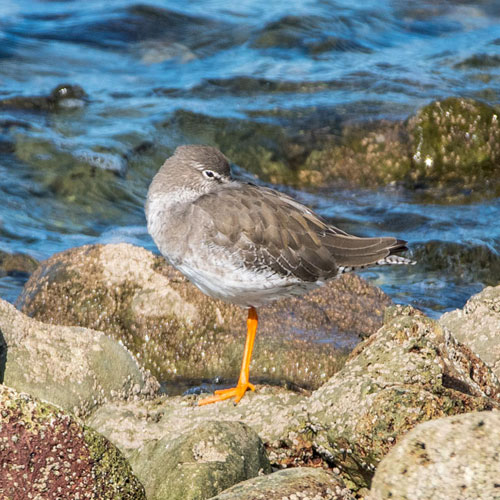 |
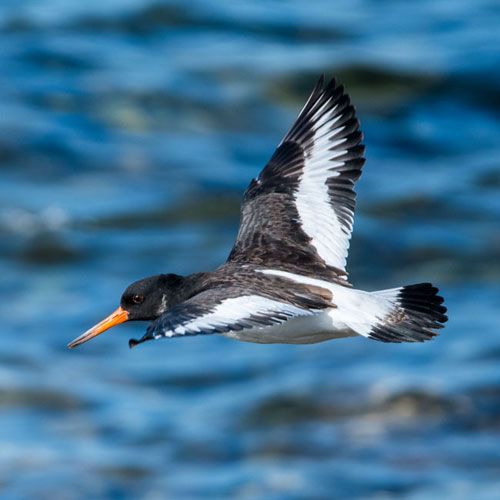 |
At the Northwest end of the
promontory I was pleased to see a gathering of waders, comprising
Ringed Plovers, Sanderling
and Dunlin. While I was photographing those, a few Turnstones
appeared on the scene.
| Ringed Plover |
Sanderling |
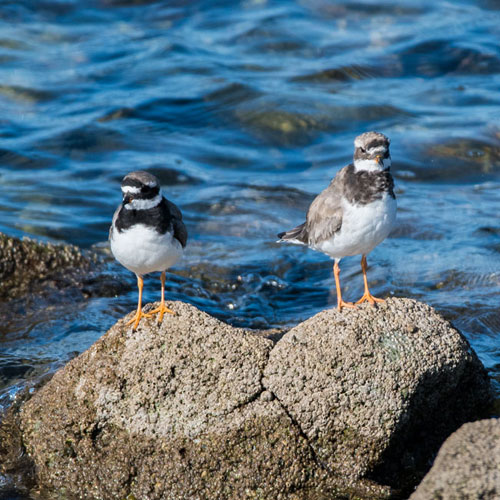 |
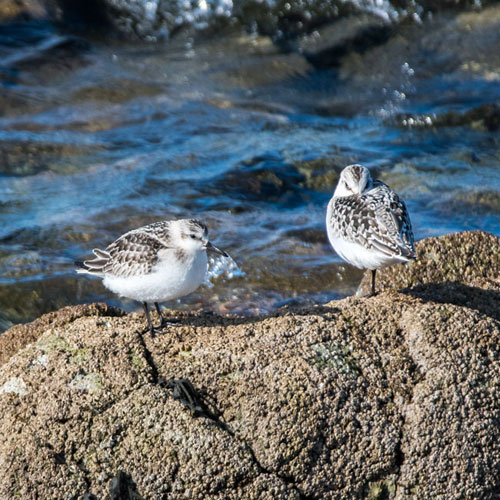 |
| Dunlin |
Turnstone |
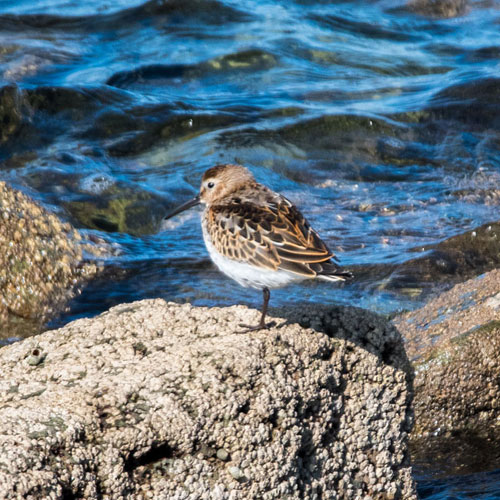 |
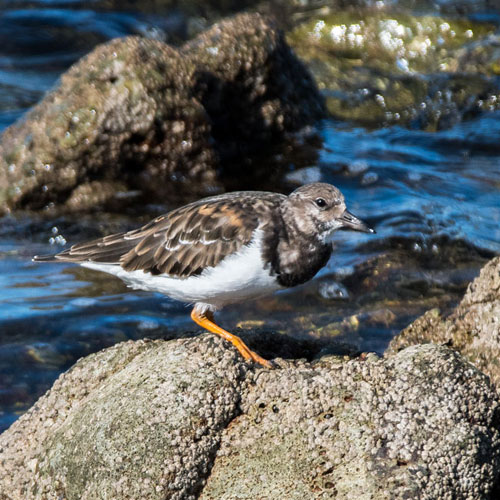 |
A Small
Tortoiseshell butterfly landed on a precariously positioned
light blue Pansy below
my stance at the tip of the Point. From the south I heard the familiar
call of a Sandwich tern. I
managed a shot of it rising out of the water carrying a freshly-caught
fish. I also snapped a couple
of fly-pasts: a Herring Gull and a Shag.
| Small Tortoiseshell Butterfly |
Sandwich Tern |
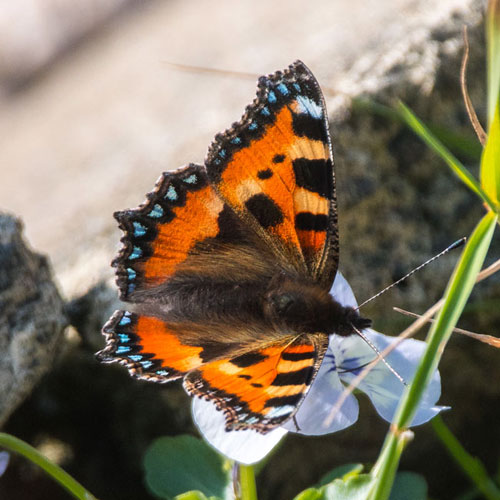 |
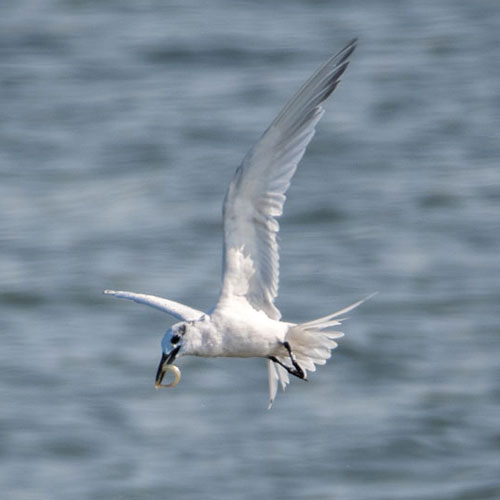 |
| Herring Gull |
Shag |
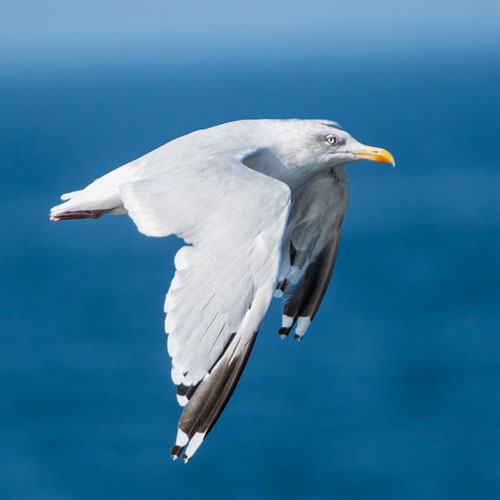 |
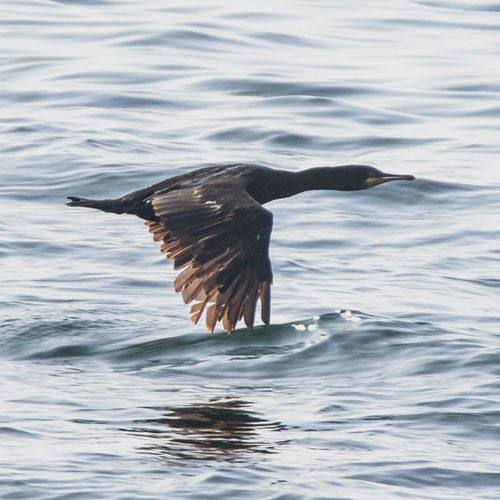 |
Satisfied with my bright
start, I moved north to Saltcoats Harbour where I found a similar
gathering of waders sheltering in the shadows of the rocks there. I got
some nice pictures though
of a Herring Gull juvenile in fight and also a Small Tortoiseshell on a
Clover flower. On rocks by the
sea wall I found a young Pied Wagtail hunting flies. Near my car I
photographed a handsome
Starling as it sat on the prom barrier.
| 1st Cycle Herring Gull |
Small Tortoiseshell Butterfly |
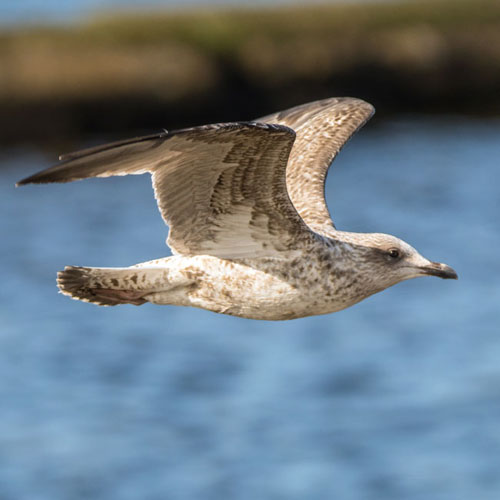 |
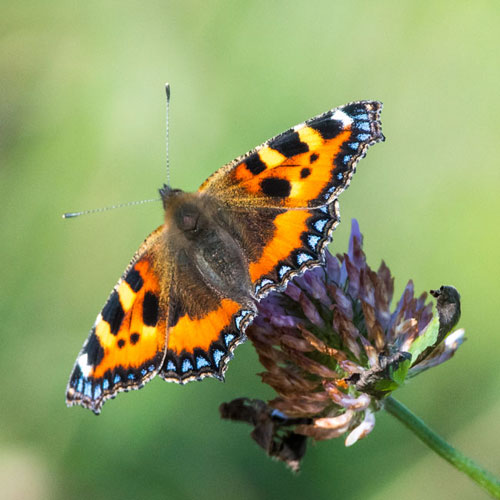 |
| Juvenile Pied Wagtail |
Starling |
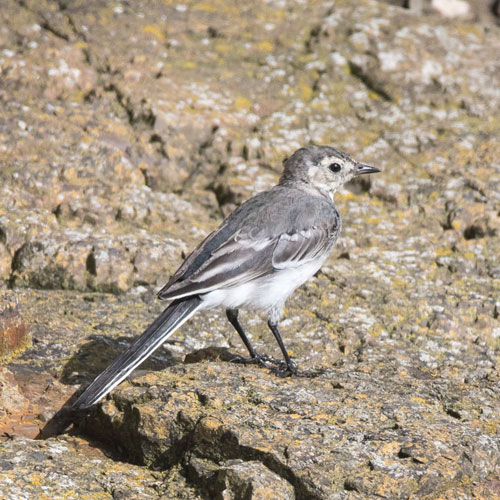 |
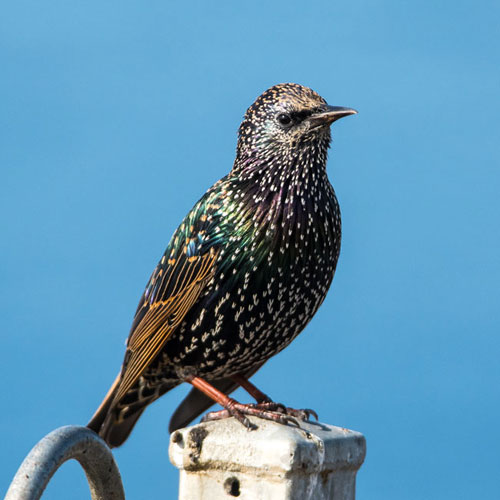 |
Just before I returned to
the car I witnessed a squabble between adult Herring Gulls over
perching
rights on the Harbour rocks. I decided to move south to check out
Irvine Harbour.
En route to Irvine Harbour,
my final stop of the day, I stopped briefly at Auchenharvie Loch. Sadly
it was largely devoid of birds with only a solitary Grey Heron on the
island, and a foraging Coot
and a 2nd year Herring Gull on the water. A swooping Great Black-backed
Gull added interest as
it flew in from the Holiday Park, but that was about it.
| Grey Heron |
Coot |
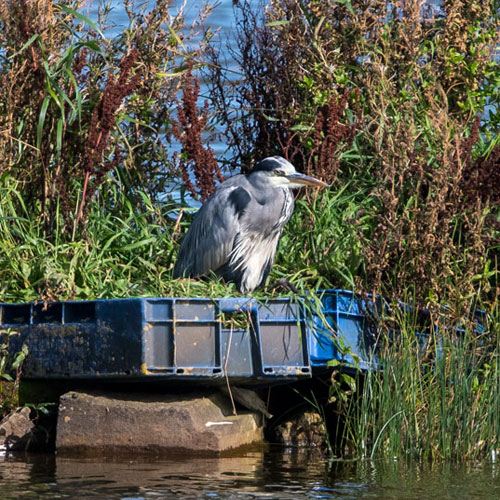 |
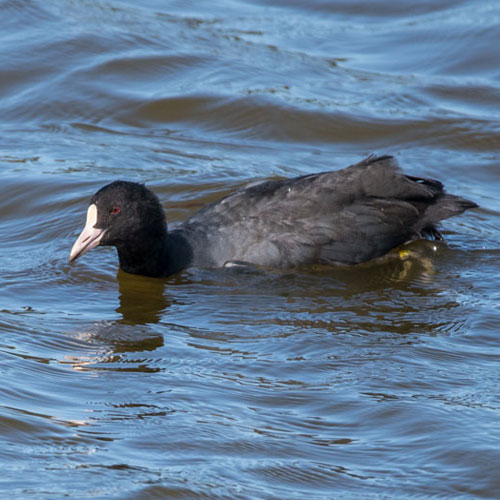 |
| 2nd Cycle Herring Gull |
Great Black - backed Gull |
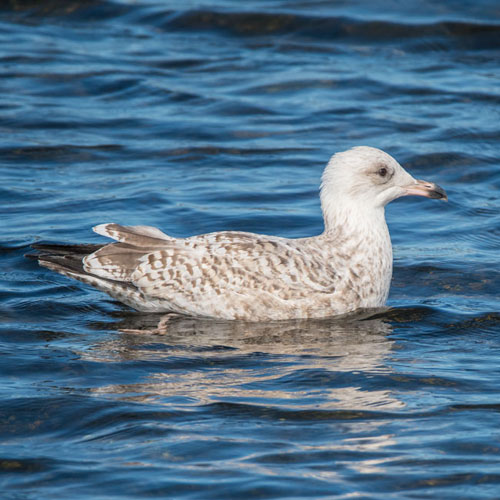 |
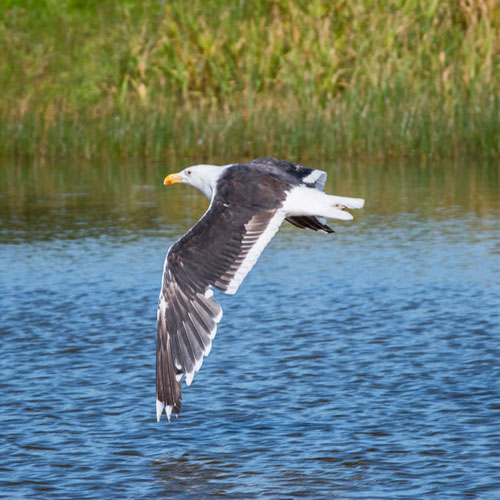 |
Irvine Harbour was very
busy with day trippers, although the birds there seemed to be less
affected
than at other sites. I got a nice picture of a juvenile Grey Heron
standing on rock at the confluence
of the River Garnock with the River Irvine. As I took that photo I was
watched by a 1st-year
Herring Gull sitting below me on a riverside post. A family of Mute
Swans were also keeping an
eye on me, probably hoping I’d toss them some bread.
| Shag |
1st Cycle Herring Gull |
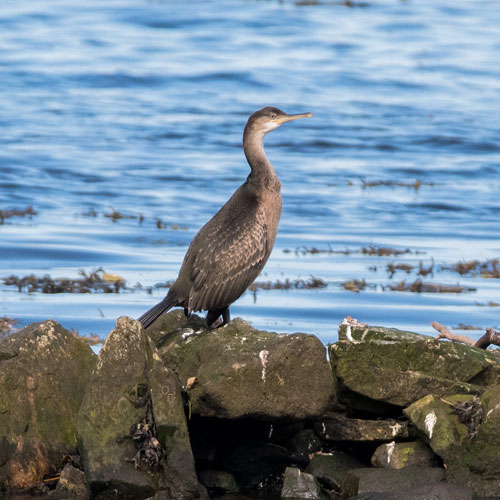 |
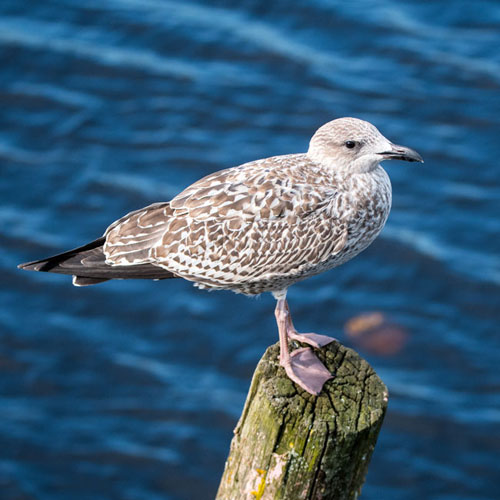 |
I was surprised to see a
small flock of Razorbills
diving for fish near the Scientists Bridge.
There had been reports of quite a few dead Razorbills having been
washed up on Ayrshire
beaches. Maybe their usual feeding waters have been disrupted in some
way, forcing them into
unfamiliar areas. Also fishing in the same part of the river was a
young Shag. It had attracted a
small band of observers as it emerged with a fish from nearly every
dive.
Another, larger fisher, a Common
or Harbour Seal, appeared on the same stretch but, after
a quick look, moved out towards the sea. To crown a rather entertaining
20 minutes, I spotted a
couple a birds over the now closed Big Idea building: a passing Curlew
and a hovering Kestrel.
The light was worsening as dense cloud was now moving in from the east,
so I decided to end on
a high and headed back to the car.
| Curlew |
Kestrel |
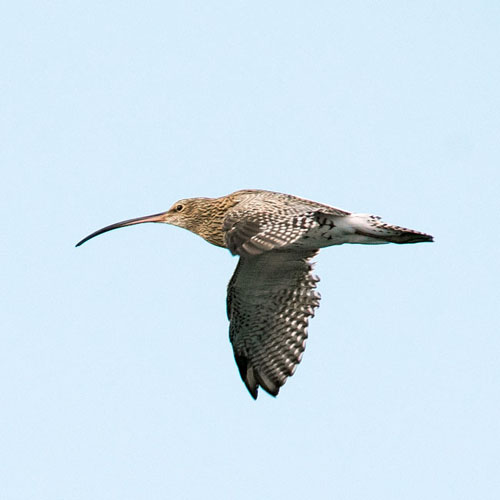 |
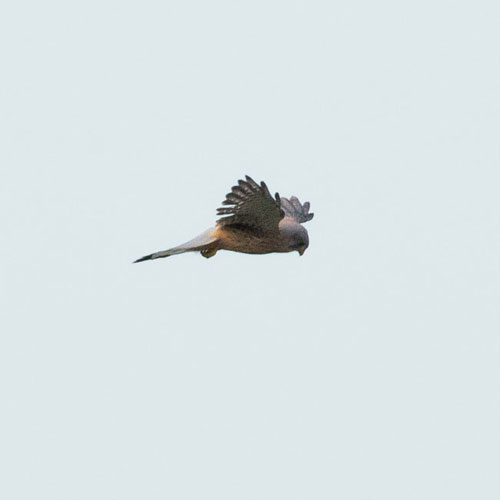 |
I’d accumulated a
wide range of sightings in the three locations and I rewarded myself
with a wee
cup of tea and biscuit. Next week’s weather is to be cooler
and more changeable. I’ll need to
watch out for the brighter days and keep an eye on where the
interesting birds are.
Week
ending 13th September 2020: Hogganfield
Loch LNR
My
destination this week was another of my favourites, Hogganfield Loch
LNR. Set in the North East of Glasgow, it is one of the seven than make
up the “Seven
Loch Wetlands Park”.
Handily placed for easy access from the M8 (Steppes turnoff), it is
well patronised by a very large number of visitors, witnessed by the
regularly-packed car park. Despite the large footfall circulating the
Loch the birdlife is surprisingly plentiful and accessible. My main
objective was to capture interesting images of that birdflife but also
to give some indication of the rich variety of wildflowers in the park,
even this late on in the year. The car park is very close to the
lochside and there is usually a mass of birds gathered adjacent to the
car park awaiting the many feeders that lovingly (and I say that
without sarcasm) pour their gifts of bread and seed onto them. I
started with shots of a Moorhen hoovering some of those seeds. A neat
Coot and a well-lit Mallard also caught my eye., and somewhat more
disheveled, a Feral Pigeon bathing in a puddle was worth a shot.
| Moorhen |
Tufted Duck |
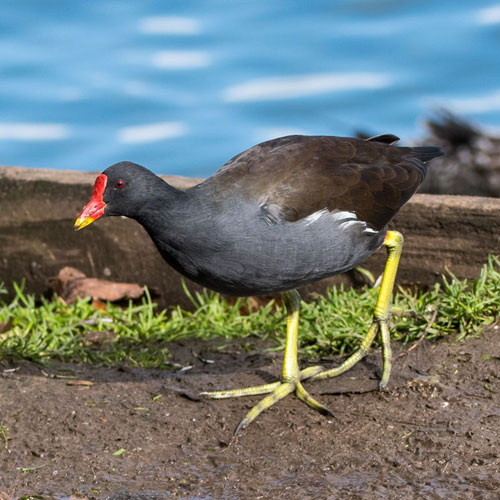 |
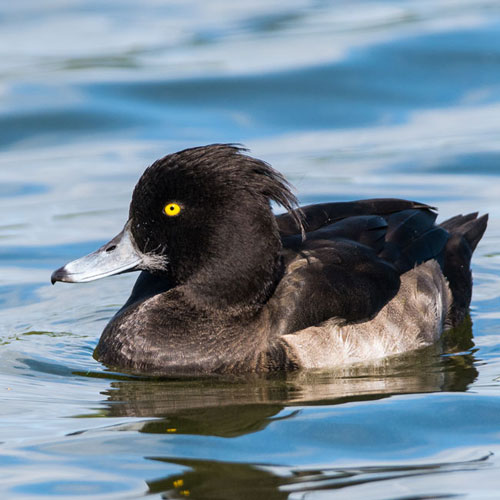 |
| Female Mallard |
Feral Pigeon |
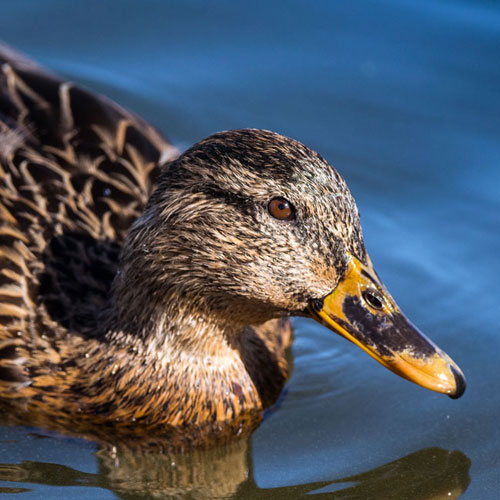 |
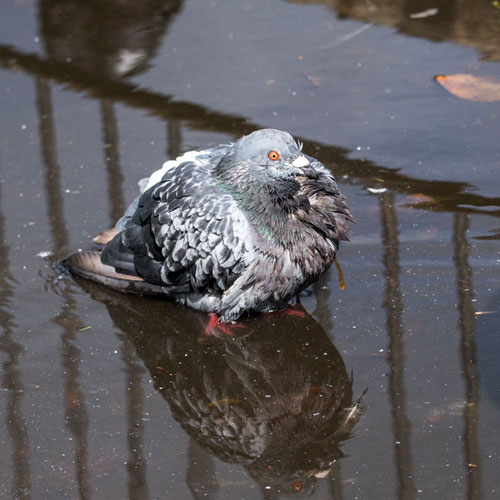 |
The
Loch is popular with larger birds such as Mute Swans (and Whoopers from
late Autumn) and Greylag Geese. I noticed what I assume was a Leucistic
Greylag with
the usual flock.
| Mute Swan |
Canada Goose |
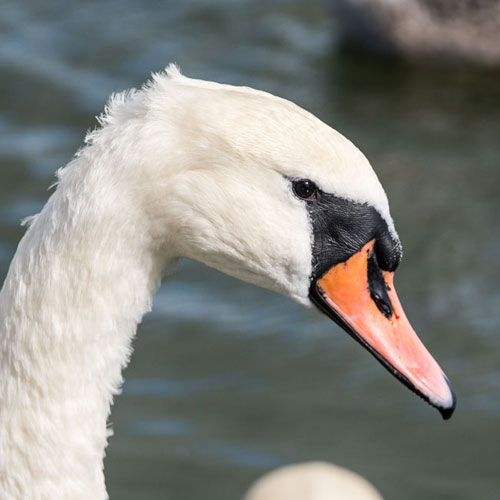 |
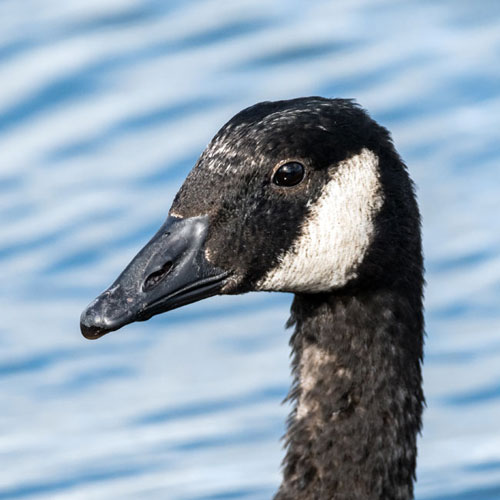 |
There
was a floating platform some 40m from the side of the loch which is
used by a variety of birds to rest their weary legs and wings. On my
visit it was mainly populated by Cormorants but also by Lesser
Black-backed Gulls and Goosanders.
The
fringes of the loch were lined with Water
Mint ,
but I also saw some Corn
Mint.
There were plenty of Oxeye Daisies in patches and, in the long grassy
areas lovely lilac Devil’s Bit Scabious. The one shown below
was
hosting a Eristalis
horticola hoverfly.
Goosanders
can be difficult to photograph in wilder settings as they can be
skittish. Not so at Hogganfield where they mix with the Swans and
don’t seem to mind the people, in fact they are looking for
bread
like most of the other birds. Coots too are easier to approach, and it
is entertaining to watch their aggressive antics. There is a huge
presence of Lesser Black-backed Gulls (easily identified by their
yellow legs). The adults are white with charcoal-black backs, but the
first-year birds are specked grey with pink legs.
| Female
Goosander |
Coot |
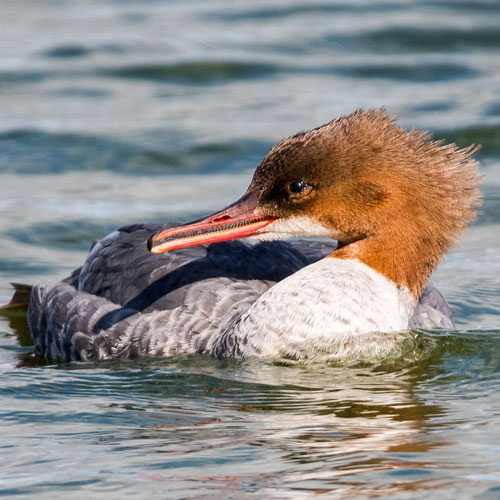 |
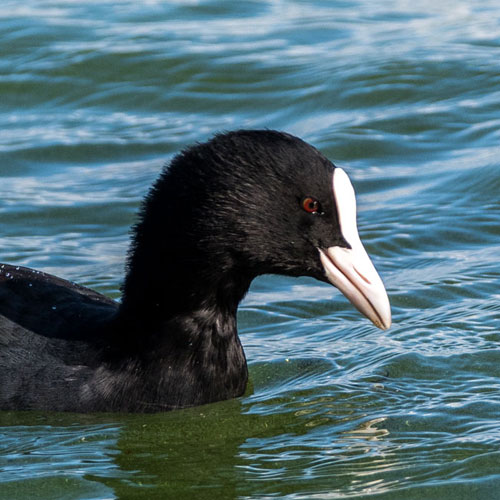 |
| Lesser
Black - backed Gull |
1st
Cycle Lesser Black - backed Gull |
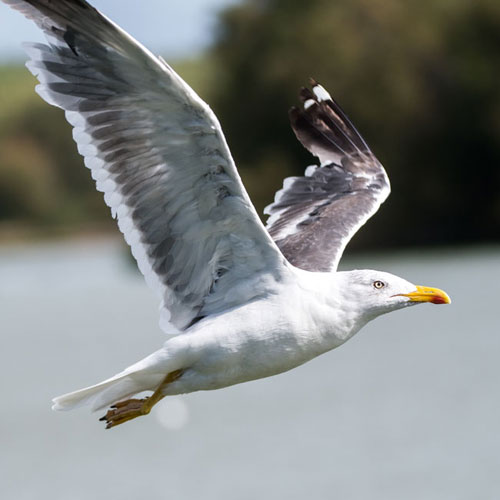 |
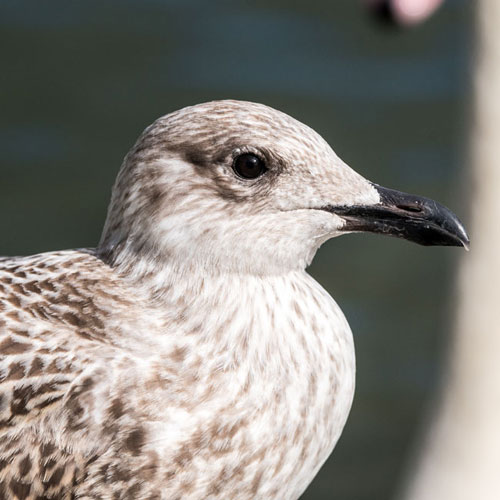 |
Probably
my favourite of all the regulars at Hogganfield are the Great Crested
Grebes. Many pairs have nested and produced offspring there, certainly
in the decade or so that I’ve visited. I don’t
quite know
what was going on in the pictures below, but an adult and a juvenile
were facing each other in the poses shown, accompanied by
aggressive-sounding calls. My best guess is that the adult was telling
the youngster that the feeding service has been withdrawn and that it
should get its own food from now on (or more succinctly,
“Beat
it. I’m fed up with you!”). While observing the
Grebes I
snapped a couple of shots of a couple of birds passing on the water, a
Mallard and a Moorhen.
| Great Crested Grebe... |
...Juvenile |
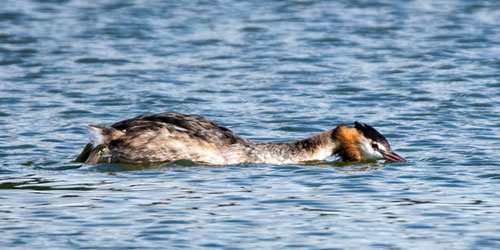 |
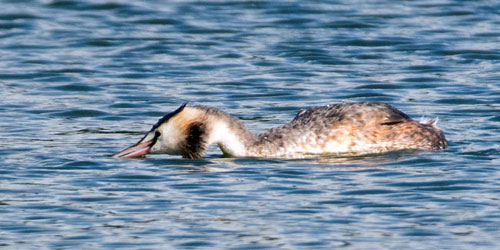 |
| Drake Mallard |
Moorhen |
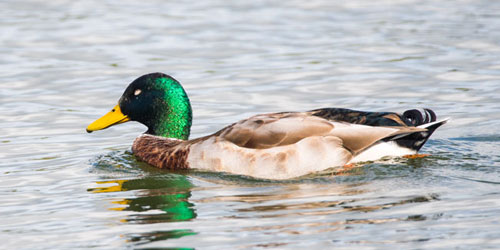 |
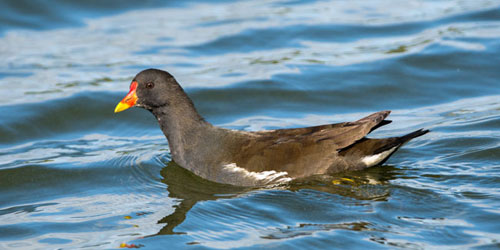 |
As
I walked around the Loch a common sight was that of cautious Magpies
flying down from the branches of tall trees. I was lucky to get a snap
of one Magpie fleeing the scene when a wee dog appeared. Near the car
park I captured an image of a flying Mallard as it descended onto the
water. Very close to the cars a Grey Heron sat boldly a few metres from
the lochside railings.
| Mallard |
Grey Heron |
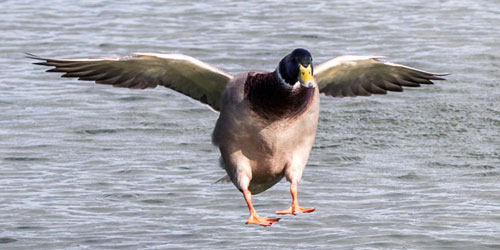 |
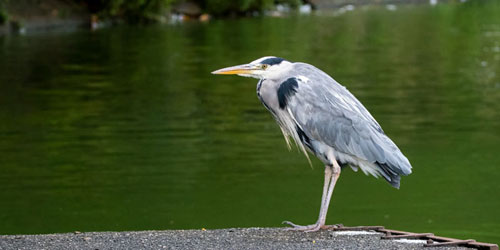 |
A
few years ago Biohaven
islands
were installed in the park. They have certainly proved popular with
birds, as shown below by the pictures of the Pochards perched
on one such island. As well as providing a safe perching areas for
birds they also seem to attract fish around them. Why I say this is
that I’ve observed piscivore (fish-eating) birds around near
the
islands such as, Cormorants and Little Grebes, as well as Great Crested
Grebes and Goosanders.
| Pochard |
Female Pochard |
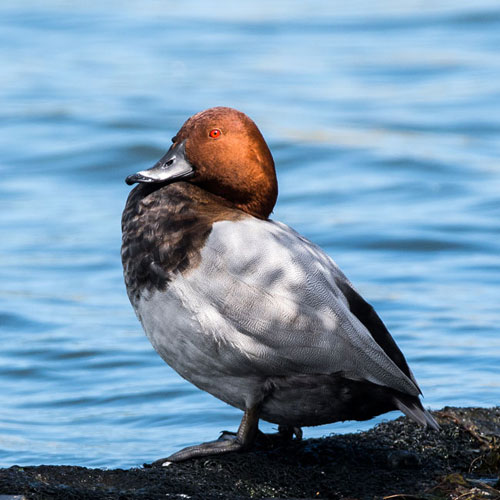 |
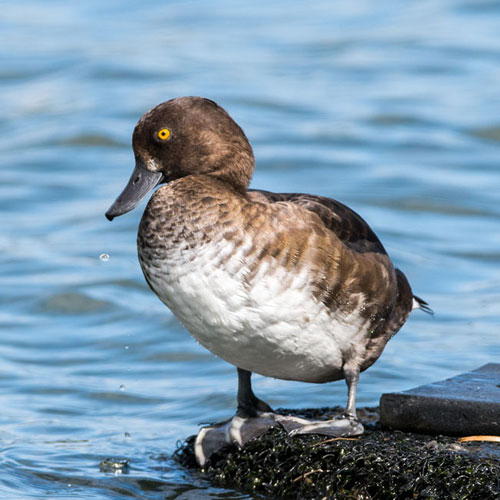 |
| Cormorant |
Little Grebe |
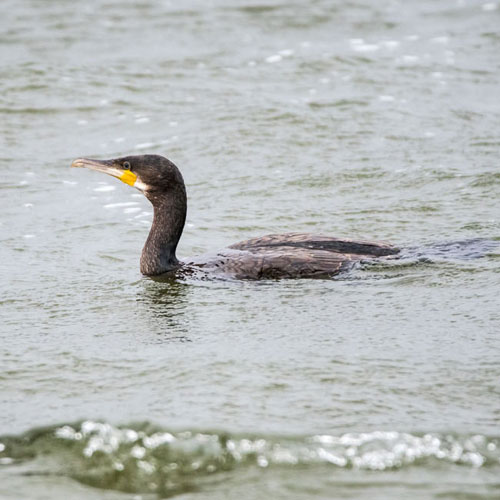 |
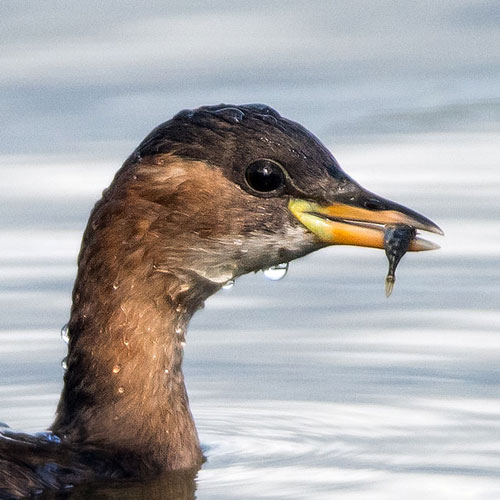 |
I
often walk in the area east of the loch where there is a pond that
often contains birds. On this visit however it was devoid of birds. I
did though take some pictures of some Meadow
Vetchling
flowers and seedpods. I found also a similar-looking wildflower, Bird’s
Foot Trefoil ,
distinguished by its leaves which, as its name suggests, are each
composed of three leaflets. My final shot of the trip was of some Sneezewort,
a pretty flower whose roots were once used to induce sneezing (not cure
it).
| Bird's - foot Trefoil |
Sneezewort |
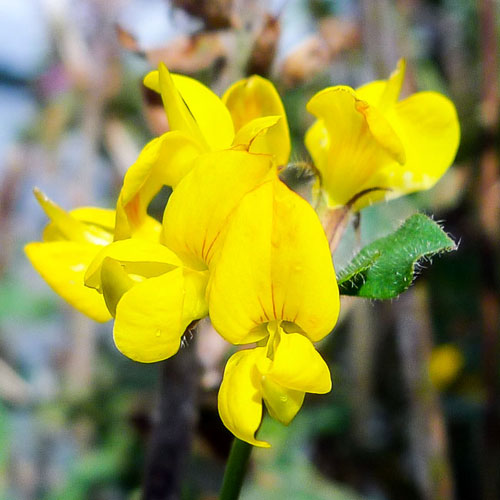 |
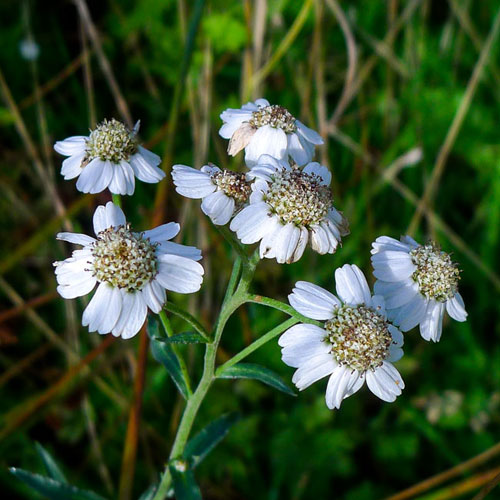 |
I
enjoyed photographing the natural delights of a very popular city park
that has also become a popular nature reserve. I was disappointed not
to have seen the Red-necked Grebe on this trip, although I have seen it
on previous
visits
Week ending 6th September 2020: RSPB
Baron's Haugh
(Map)
RSPB
Barons Haugh (Website) to the south of Motherwell, in the
heart of Lanarkshire, is a favourite
haunt of mine. It contains a varied habitat of deciduous woodland,
extensive marsh and wetland,
and is bordered by the Clyde, a major Scottish river. The weather
prediction was for was mild but
showery conditions with sunny intervals. The RSPB cabin in the car park
was sporting its new
livery, a beautiful wetland scene depicting Otter, Kingfisher and
Nuthatch, three of the reserve’s
most prized residents.
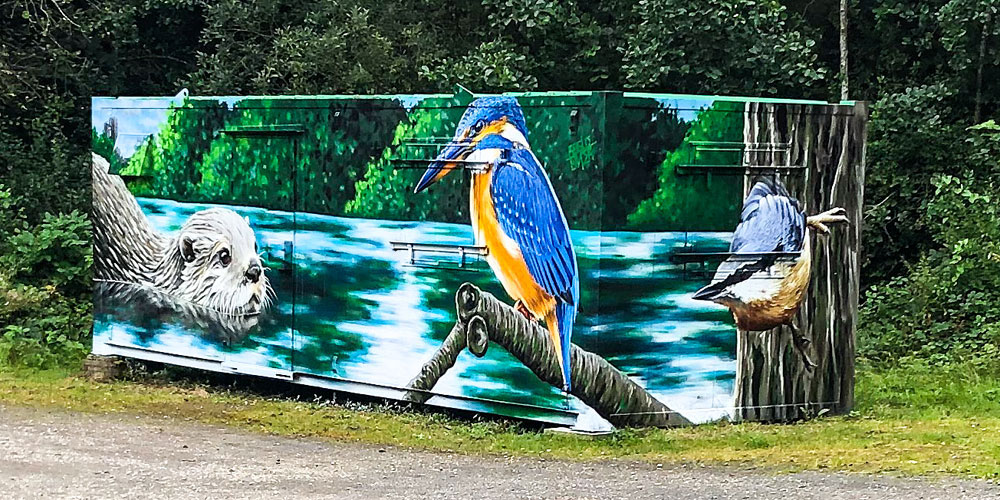 |
Soon after walking from the car park I noticed a solitary but striking
bloom, Fox
and Cubs,
amid the long grass. Nearby a Magpie watched me as it carefully guarded
its tasty morsel. By the
path to the Marsh Hide (which was closed due to vandalism) tall heads
of Reed
Mace were
growing with lovely Purple Loosestrife.
| Fox and Cubs |
Magpie |
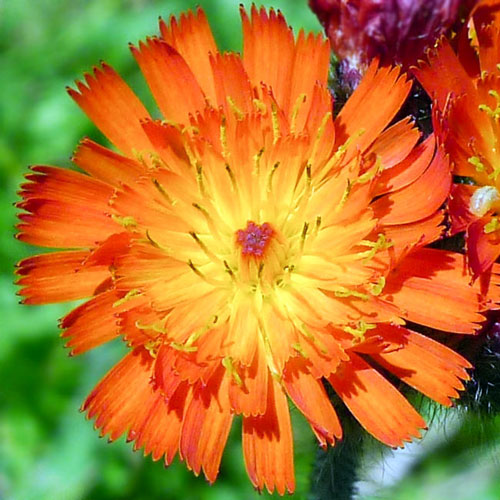 |
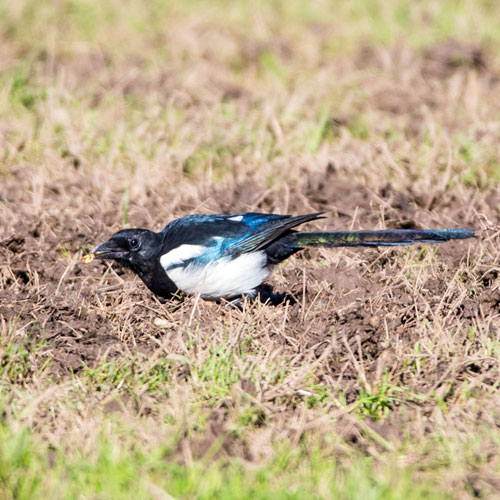 |
| Reed Mace |
Purple Loosestrife |
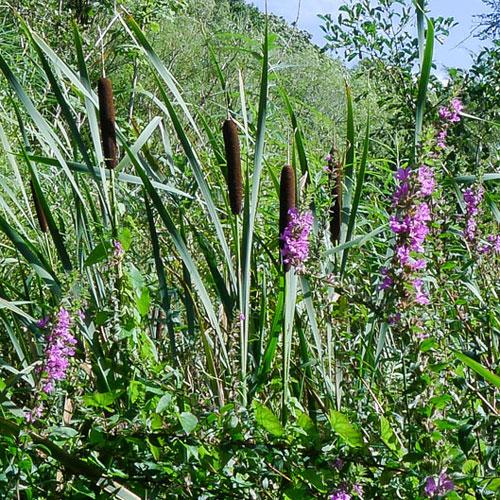 |
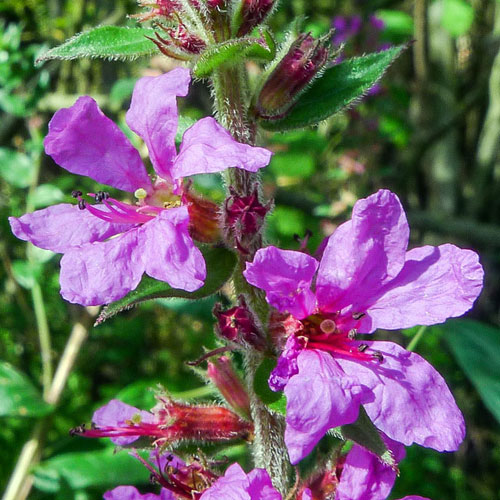 |
I peeked around the side of
the hide and snapped a couple of shots of an eclipse Mallard cruising
around the pond and a Woodpigeon foraging in the grass. A Buzzard made
a close overhead pass
followed a few minutes later by a Cormorant. In the distance there were
Lapwing on the muddy
flats but I didn’t see a Black-tailed Godwit that had been
reported there.
| Mallard in Eclipse plumage |
Wood Pigeon |
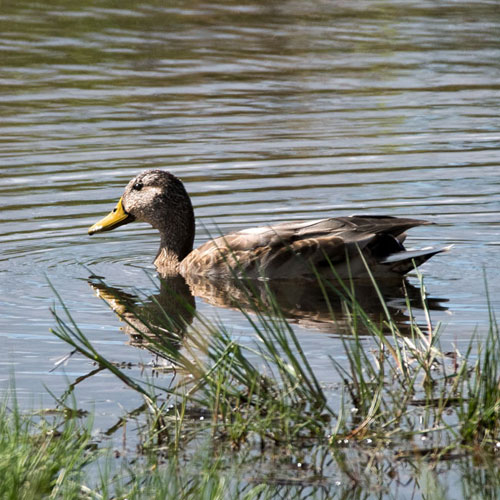 |
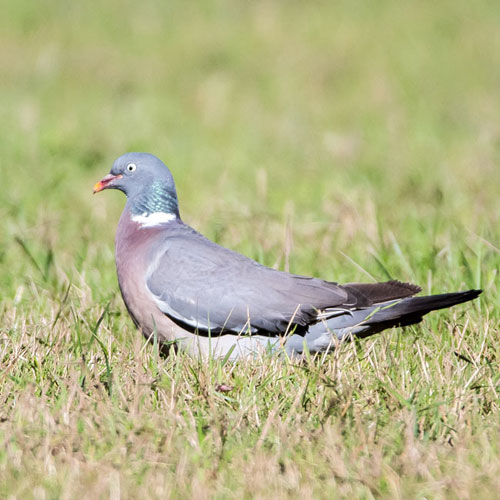 |
| Common Buzzard |
Cormorant |
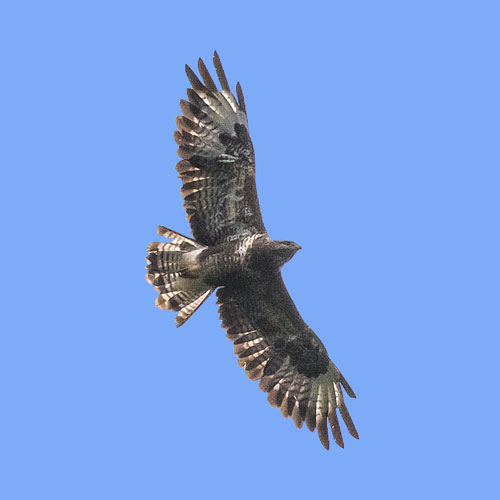 |
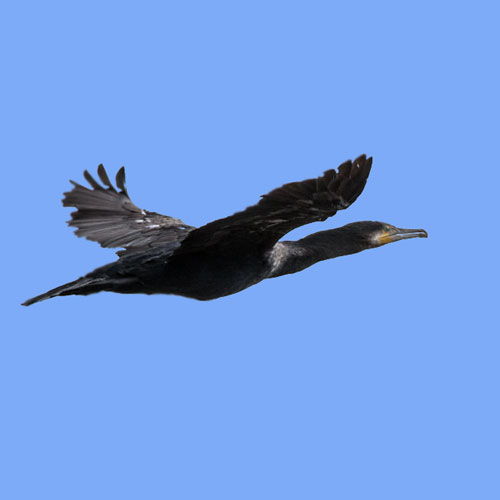 |
At the Causeway hide I was pleased to see that the Haugh was packed
with birds. There were
many Herring Gulls and Black-headed Gulls moving frequently on and
above the water. The
picture below also shows Cormorants and Teal in flight.
As I surveyed the Haugh from the hide, a bold young Grey Heron flew
onto the shallows, scaring
off the smaller birds.
On exposed branches 50m in front of the hide there were perching
Cormorants drying their
feathers between fishing trips.
Closer to the hide, on the right side, there was a large flock (a“deceit”)
of very active
Lapwings. They are very skittish, taking to the air at the slightest
threat, usually returning to their
original positions after tracing a couple of circles around the Haugh.
They are very agile flyers (annoyingly so if you’re trying to
photograph them), effortlessly swooping
and zigzagging as they look for their next preferred position to feed.
On my way to the Phoenix hide I passed a large Brown Slug slithering
along the pathway. A
Common Darter dragonfly landed on a path-side fern for a quick blast of
sunshine to keep up its
energy levels. There were many tall, beautiful, but invasive Himalayan
Balsam plants around the
reserve. I caught an image of a Honey Bee
as it entered one of it’s beautiful flowers. And,
beside the hide, a sawfly, Tenthredo
arcuata, was working its way through the many
densely-packed strands of a Creeping Thistle flower.
| Spanish Slug |
Dragonfly - Common Darter |
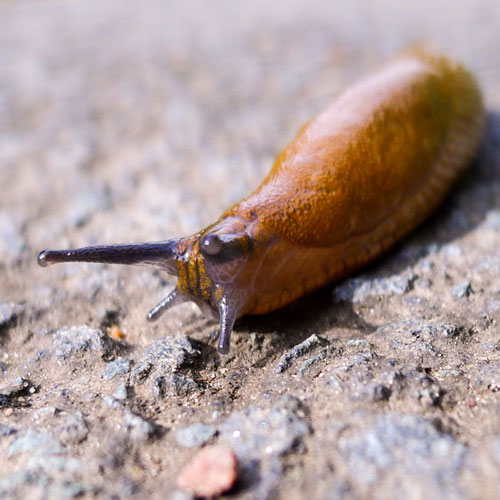 |
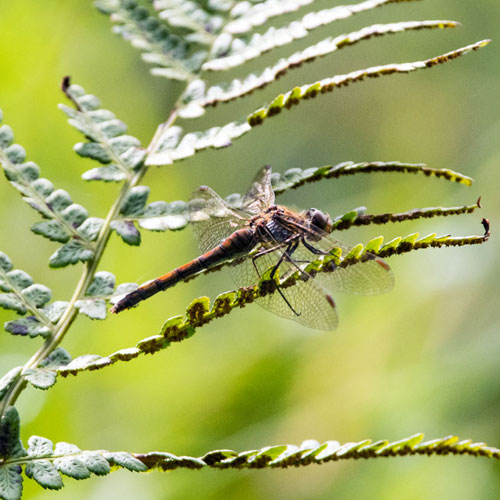 |
| Honey Bee |
Sawfly - Tenthredo arcuata |
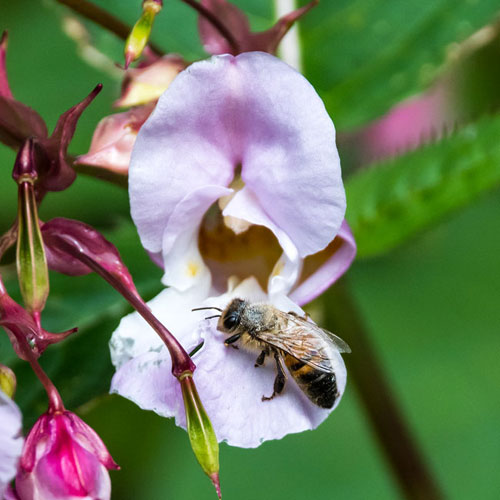 |
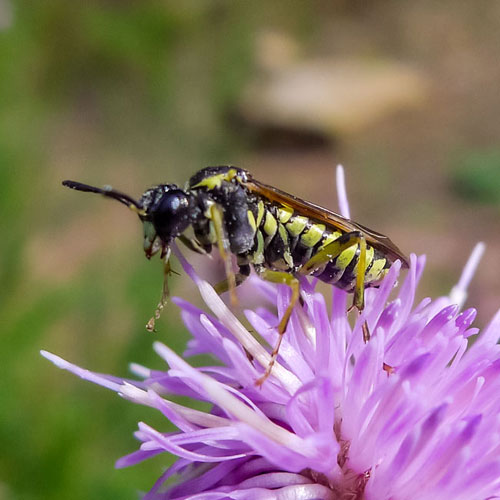 |
Immediately below the
Phoenix hide a few Little Grebes (also known as Dabchicks) were diving
for fish. They are very efficient fishers as they nearly always emerge
with a small fish in their
beaks. I was thrilled to see a Kingfisher
darting onto the scene and take up residence on an
exposed tree trunk to the right of the hide. Unfortunately, with the
light behind, it was silhouetted,
but when It soon started to dive for fish it was no less exciting.
A scoper drew my attention to the area in front of the Causeway hide,
where he said he had seen Common
Snipe . I was unable to see that muddy bank from
that hide due to the many
reeds there, so I trained my lens on that patch and, although the birds
were now over 100m away,
the picture below shows four Snipe at work in the mud.
He said he had also seen
more Snipe in the water’s edge to the left of the Causeway
Hide, so I
decided to return to the Causeway hide to investigate. On my way there
I came across a few
attractive hoverflies: Chequered Hoverfly, Eristalis arbustorum,
Dasysyrphus albostriatus and the
Sunfly.
| Chequered Hoverfly |
Hoverfly - Eristalis arbustorum, |
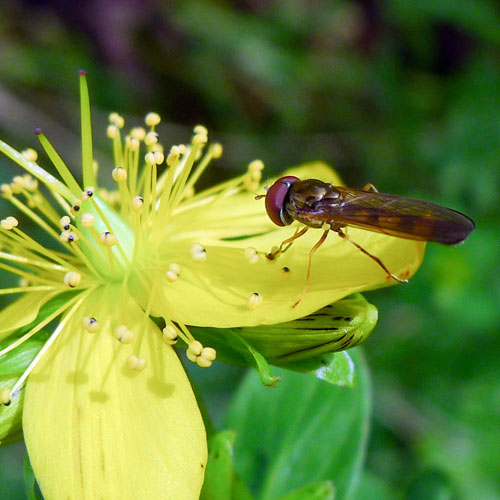 |
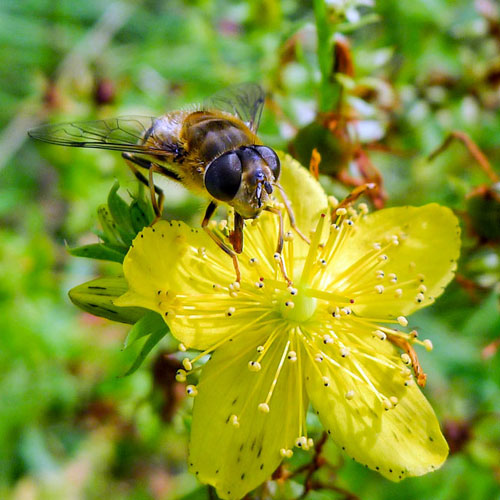 |
| Hoverfly - Dasysyrphus albostriatus |
Hoverfly - Sunfly |
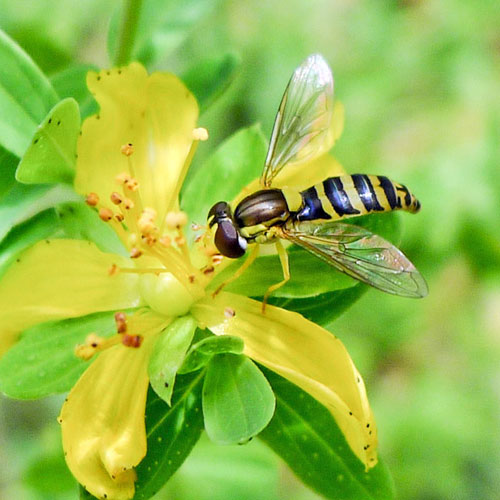 |
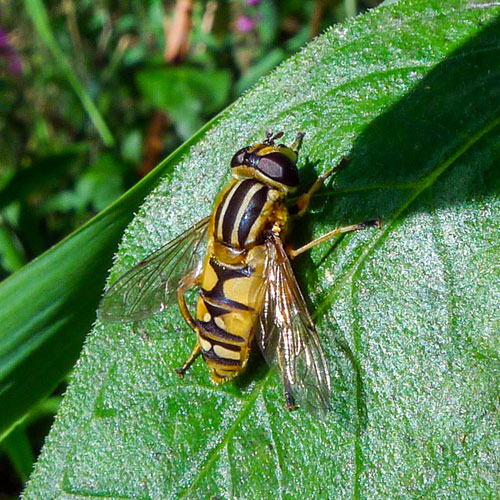 |
As soon as I arrived back
at the
Causeway hide there were a half dozen Snipe feeding to the left
of the hide. They retreated back into the reeds a few times when danger
loomed but they reemerged within a few minutes allowing me to get some
shots (hampered by a gusty wind and tall
vegetation.
On my visit I also snapped
a few Autumn fruits: Rose hips, Hawthorn berries, ripening Brambles
and some elegant berries of Bittersweet.
| Wild (Dog) Rose |
Hawthorn |
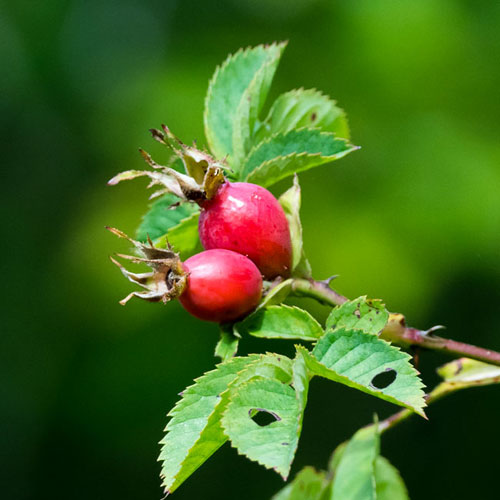 |
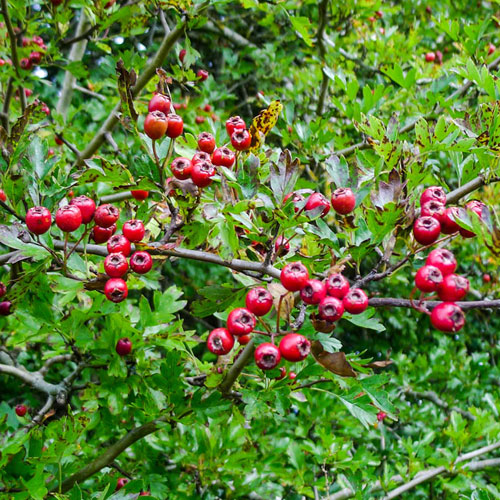 |
| Bramble |
Bittersweet |
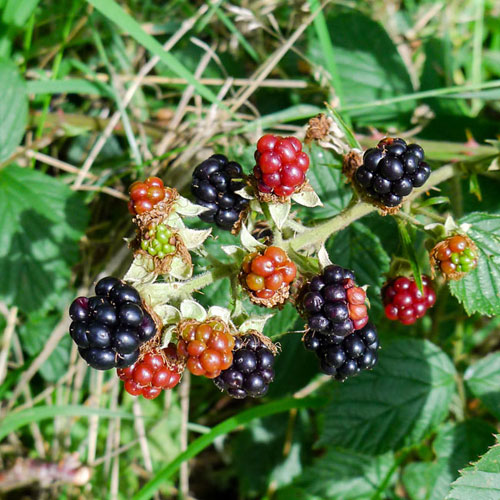 |
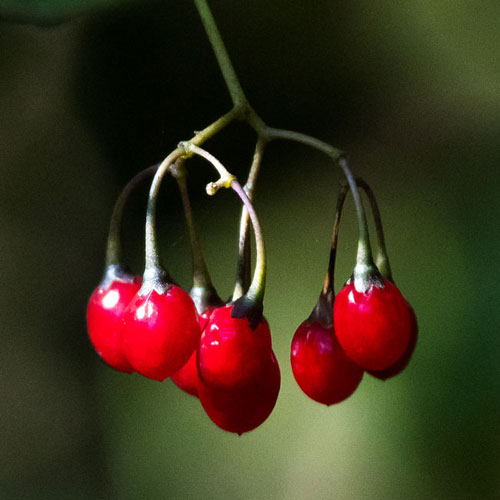 |
I am very satisfied with my
collection of Baron’s Haugh sightings, my favourites being
the
Kingfisher and Snipe, closely followed by the very charming fishing
Dabchicks. It was frustrating
though that I could hear Nuthatch, Long-tailed Tits, Robin, and
Goldcrest, to name but a few, but
they were hidden from view by
dense foliage. However, it won’t be too long before the
Autumn
leaves start to fall and I’ll get a much clearer view
Highlights - September 2020
Below we
present September
2020's gallery of my favourite pictures. They are not listed
in
the order thay have been taken, but according to a series of themes.
WINGS
| Lapwing |
Grey Heron |
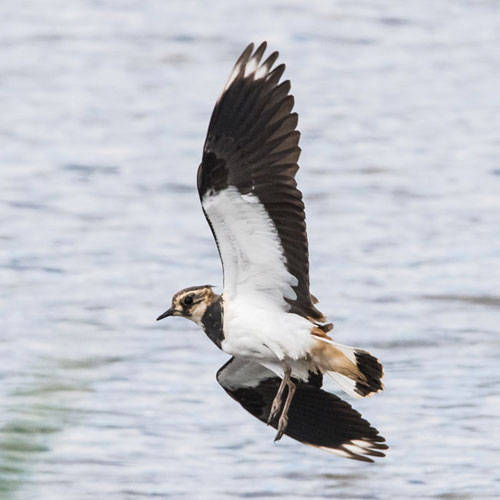
|
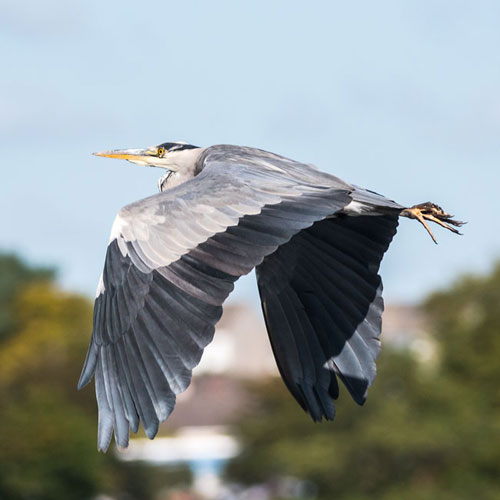
|
| Redshank |
Female Teal |
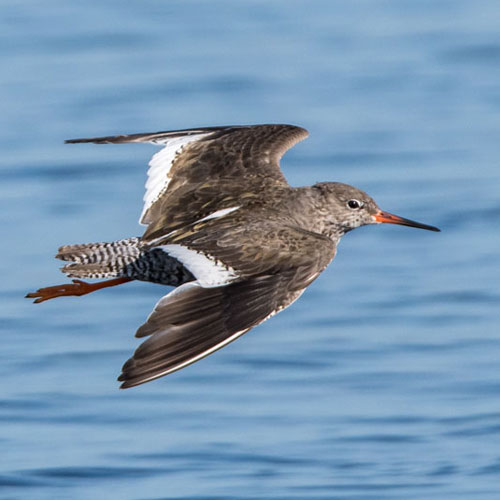
|
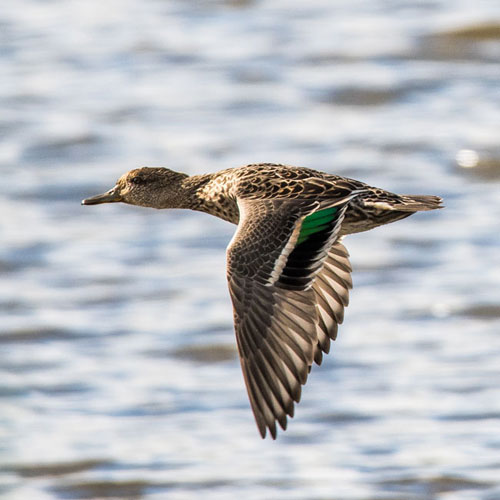
|
| Magpie |
Mute Swan |
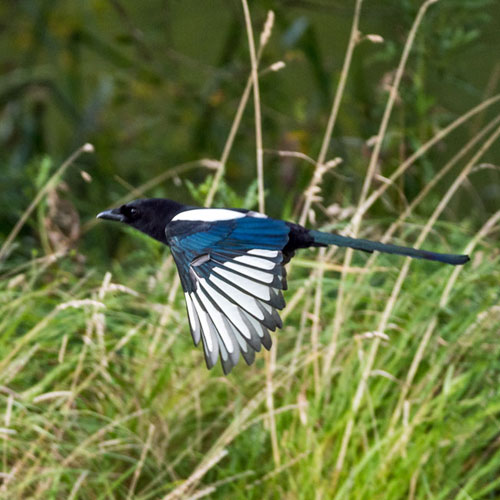
|
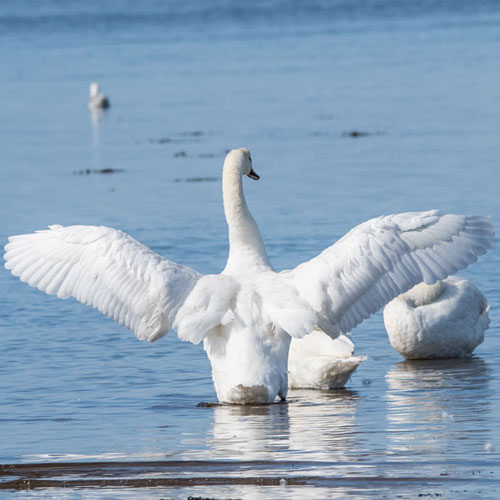
|
FEEDING TIME
| Coot |
Grey Squirrel |
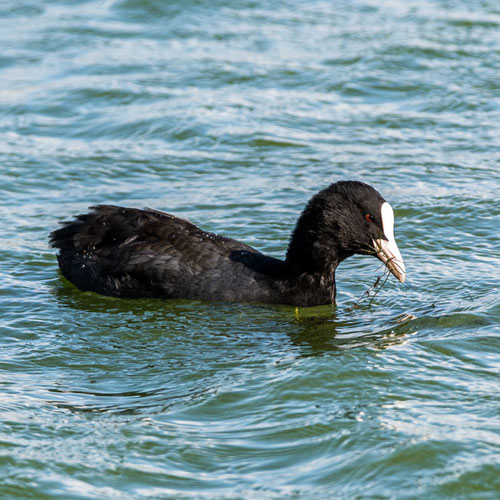 |
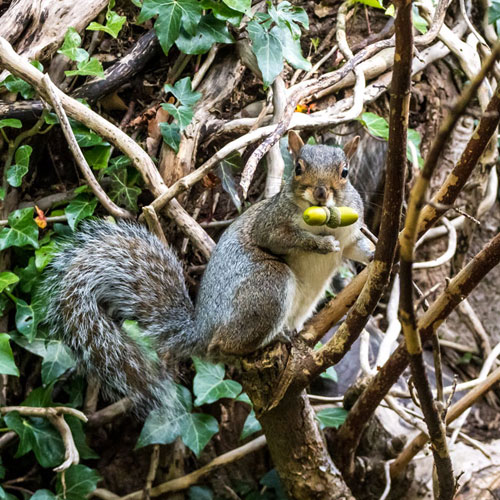 |
| Little Grebe |
Red - necked Grebe |
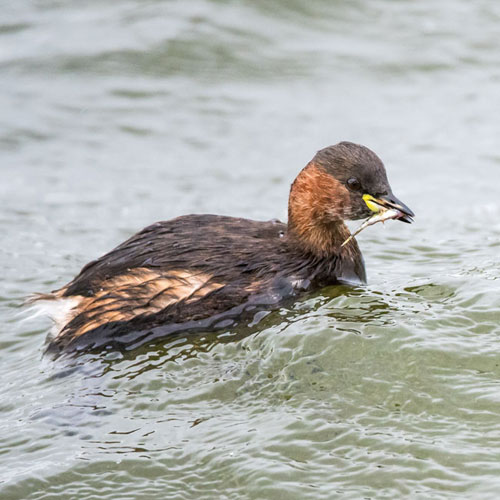 |
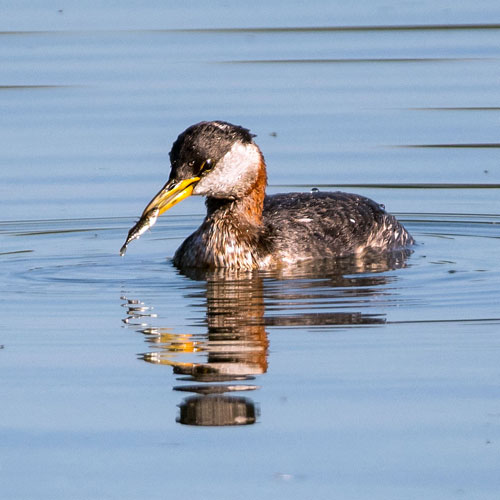 |
INVERTEBRATES
| Caddisfly |
Common Carder Bumblebee |
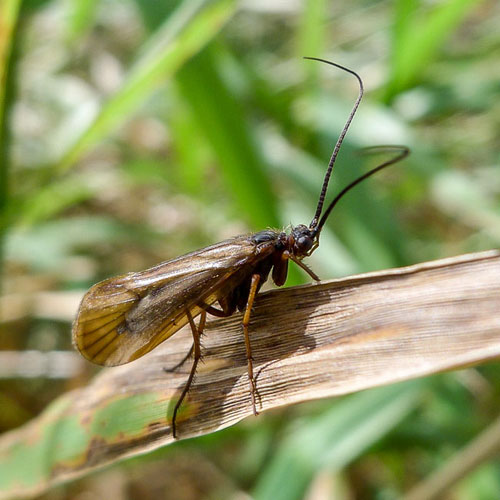
|
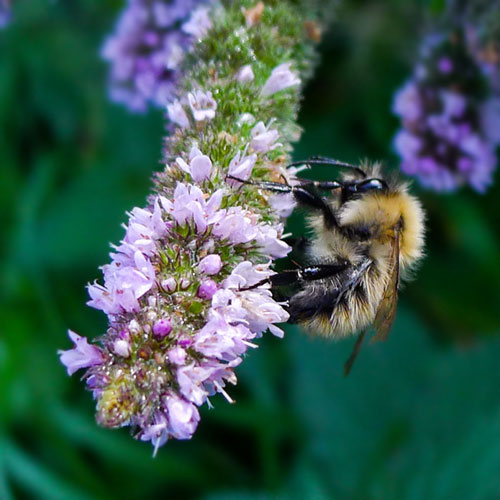
|
| Comma Butterfly |
Hoverfly - Dasysyrphus albostriatus |
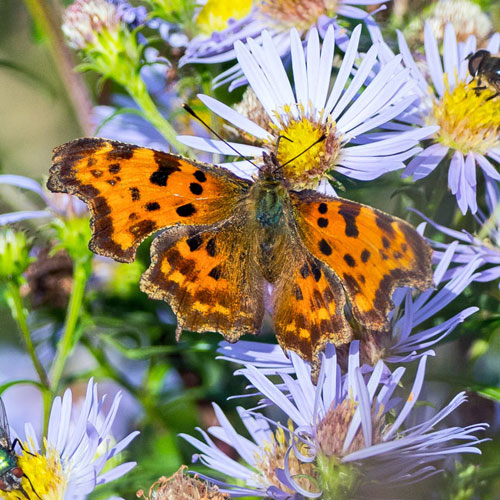
|
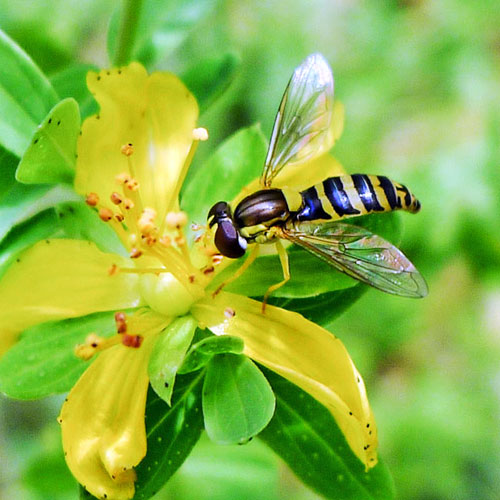
|
| Hoverfly - Eristalis horticola |
Honey Bee |
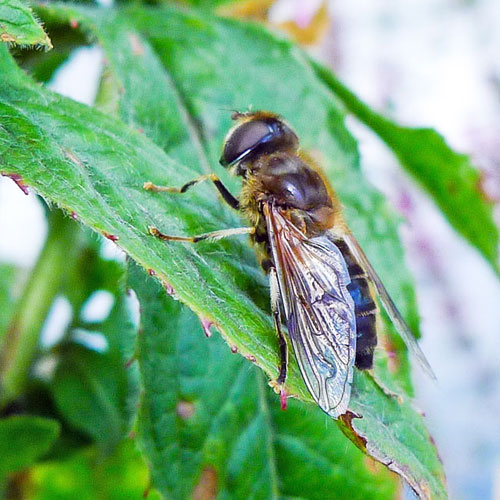
|
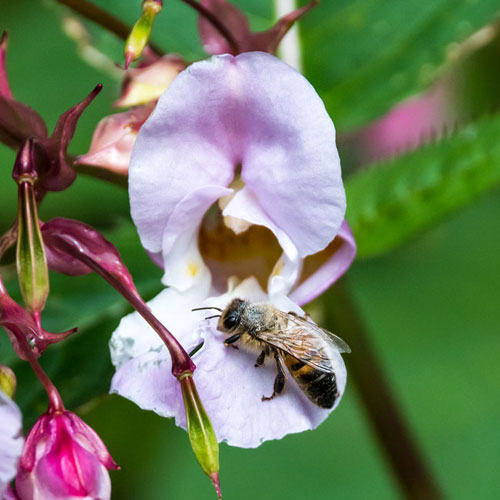
|
PORTRAITS
| Canada Goose |
Pochard |
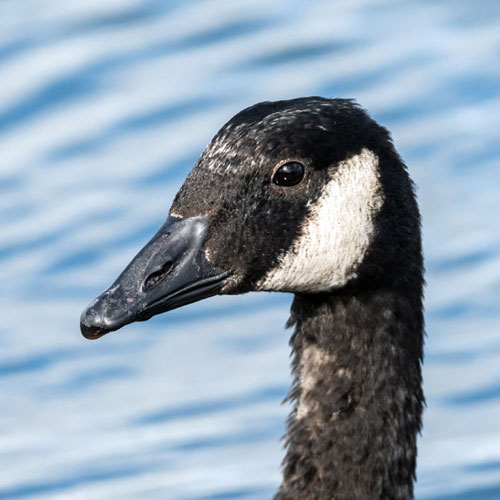
|
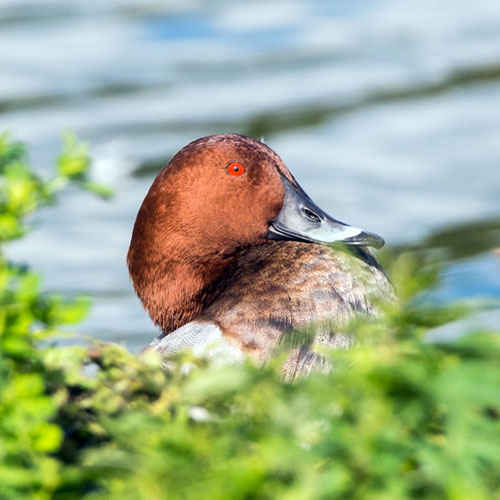
|
| Female Mallard |
Mallard |
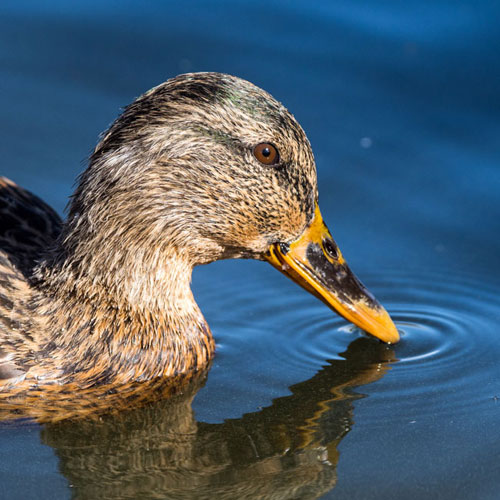
|
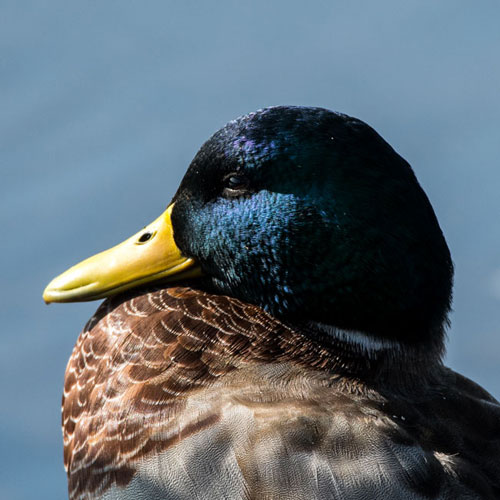
|
| Juvenile Starling |
Carrion Crow |
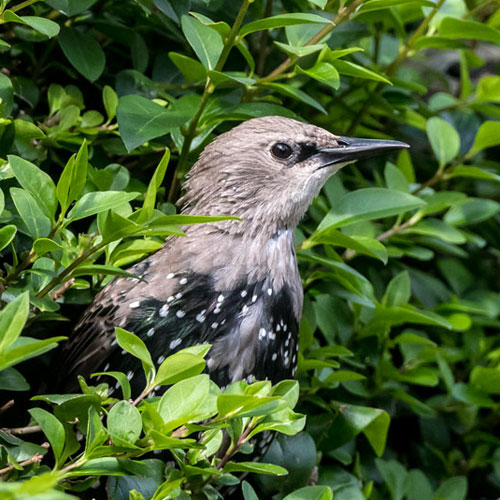
|
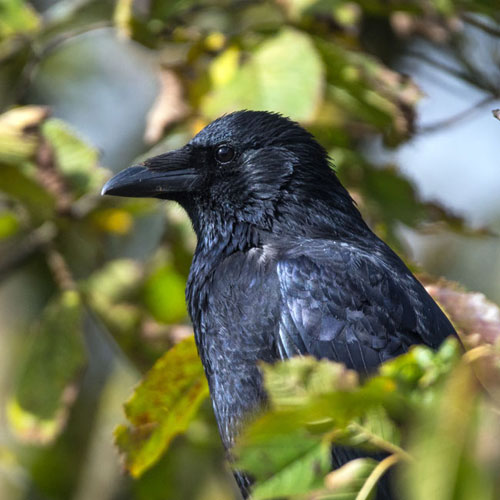
|
FLOWERS
| Devil's Bit Scabious |
Fox and Cubs |
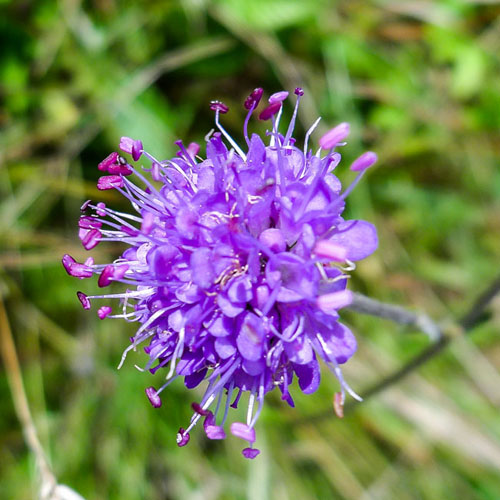
|
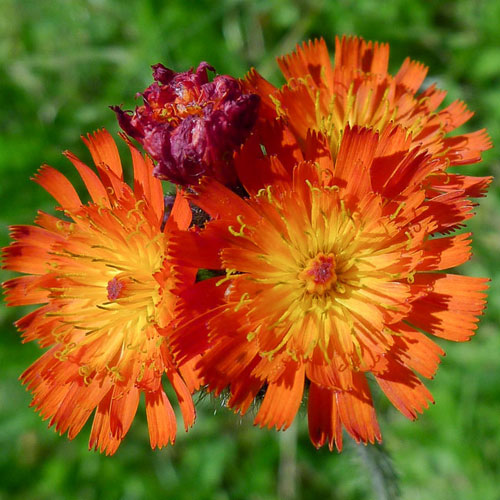
|
| Fuschia |
Michaelmas Daisy |
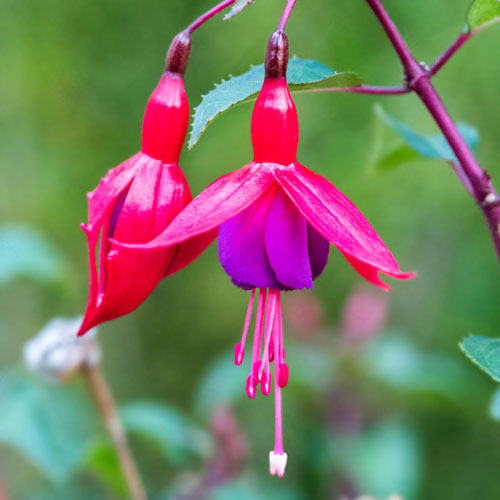
|
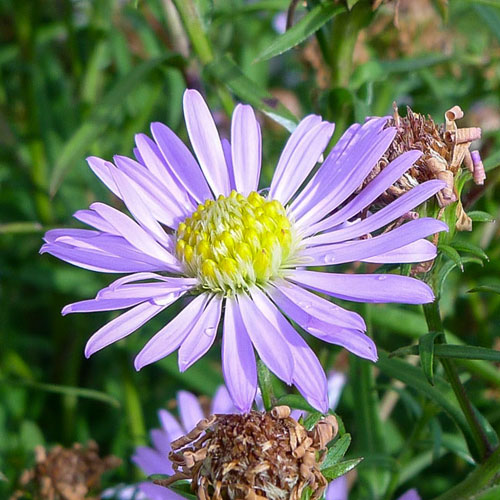
|
| Monbretia |
Perforate St John's Wort |
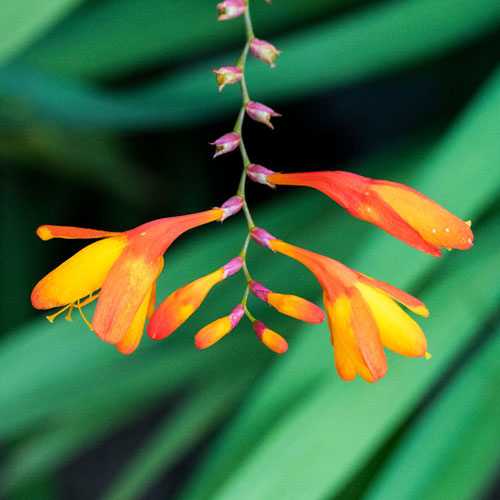
|
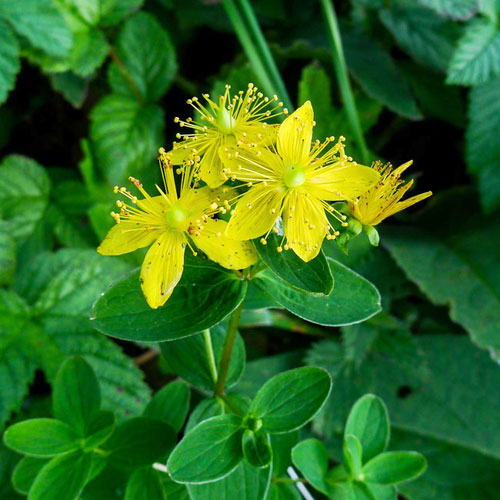
|
GREY
HERON
WATER
BIRDS
| Water Rail |
Pale - bellied Brent Goose |
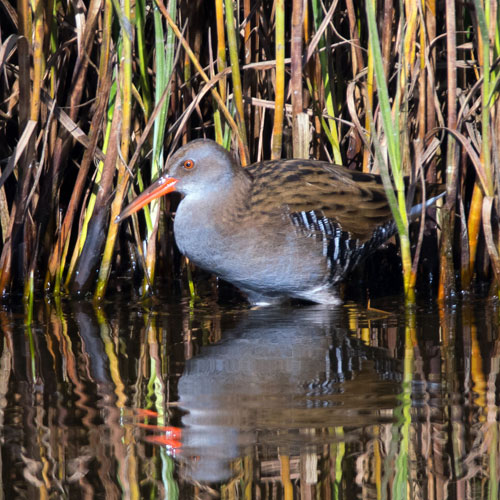
|
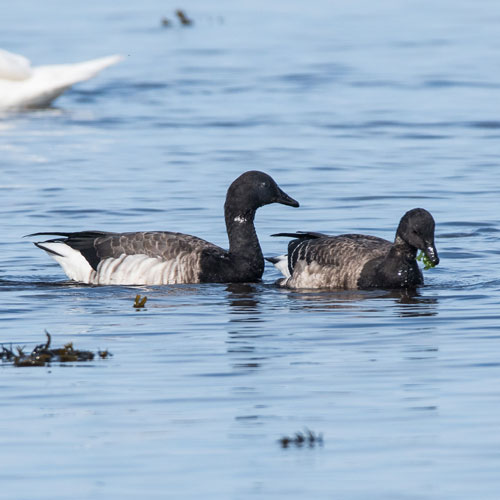
|
| Slavonian Grebe |
Moorhen |
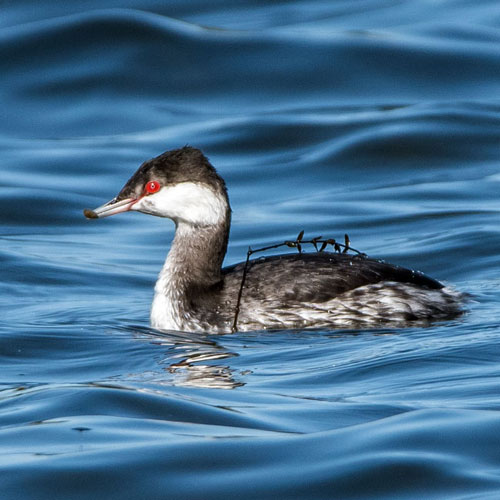
|
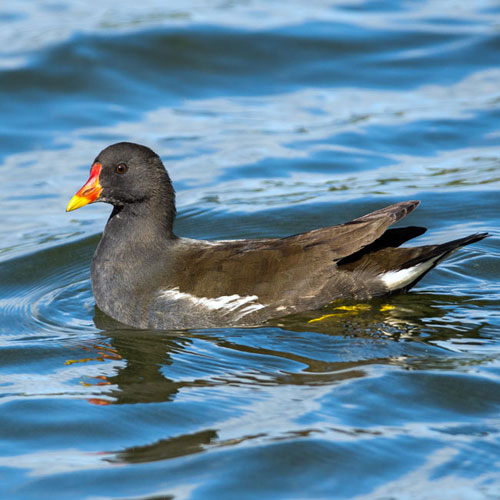
|
| Female Goosander |
Greenshank |
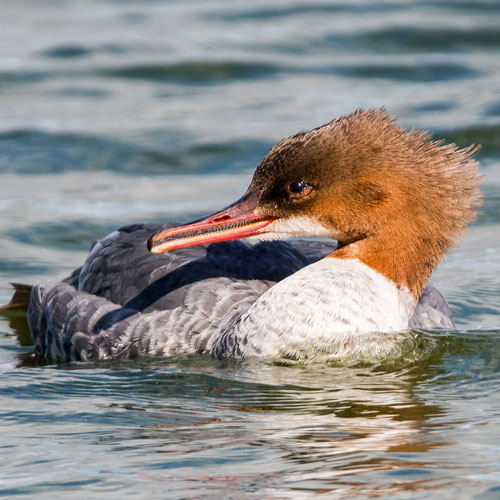
|
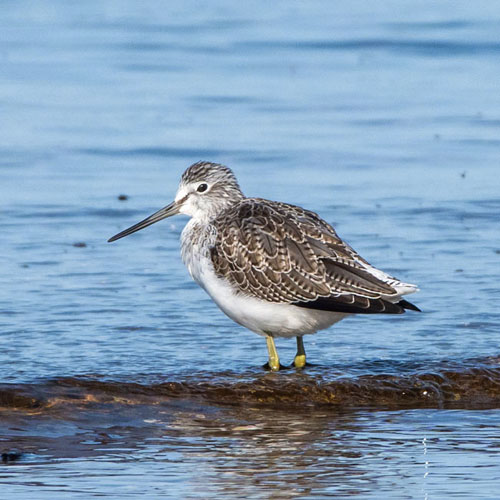
|
Back To Top
|

